
City
of hobart
AGENDA
City Infrastructure Committee Meeting
Open Portion
Wednesday, 24 February 2021
at 5:15 pm
via Zoom

City
of hobart
AGENDA
City Infrastructure Committee Meeting
Open Portion
Wednesday, 24 February 2021
at 5:15 pm
via Zoom
Working together to make Hobart a better place for the community.
THE VALUES
The Council is:
|
People |
We care about people – our community, our customers and colleagues. |
|
Teamwork |
We collaborate both within the organisation and with external stakeholders drawing on skills and expertise for the benefit of our community. |
|
Focus and Direction |
We have clear goals and plans to achieve sustainable social, environmental and economic outcomes for the Hobart community. |
|
Creativity and Innovation |
We embrace new approaches and continuously improve to achieve better outcomes for our community. |
|
Accountability |
We are transparent, work to high ethical and professional standards and are accountable for delivering outcomes for our community. |
|
|
Agenda (Open Portion) City Infrastructure Committee Meeting |
Page 3 |
|
|
24/2/2021 |
|
Business listed on the agenda is to be conducted in the order in which it is set out, unless the committee by simple majority determines otherwise.
APOLOGIES AND LEAVE OF ABSENCE
1. Co-Option of a Committee Member in the event of a vacancy
3. Consideration of Supplementary Items
4. Indications of Pecuniary and Conflicts of Interest
6.1 Request for Speed Limit Reduction 490 to 601 Huon Road South Hobart
6.2 Naming of Private Road - TT Flynn Street, Sandy Bay.
6.3 Pura Milk Factory, Lenah Valley - Heavy Vehicle Use of Augusta Road - Status Update
6.4 State Government Waste Announcements - Container Refund Scheme and Waste to Landfill Levy
6.5 Hobart Energy Use and Greenhouse Gas Emissions Annual Reports: 2018 - 2019 & 2019 - 2020
7 Committee Action Status Report
7.1 Committee Actions - Status Report
8. Responses to Questions Without Notice
8.1 City of Hobart Fleet Vehicles
10. Closed Portion Of The Meeting
|
|
Agenda (Open Portion) City Infrastructure Committee Meeting |
Page 5 |
|
|
24/2/2021 |
|
City Infrastructure Committee Meeting (Open Portion) held Wednesday, 24 February 2021 at 5:15 pm.
This meeting of the City Infrastructure Committee is held in accordance with a Notice issued by the Premier on 3 April 2020 under section 18 of the COVID-19 Disease Emergency (Miscellaneous Provisions) Act 2020.
|
COMMITTEE MEMBERS Harvey (Chairman) Lord Mayor Reynolds Deputy Lord Mayor Burnet Behrakis Ewin
NON-MEMBERS Zucco Briscoe Sexton Thomas Dutta Sherlock Coats |
Apologies:
Leave of Absence: Councillor J Ewin.
|
|
The minutes of the Open Portion of the City Infrastructure Committee meeting held on Wednesday, 25 November 2020, are submitted for confirming as an accurate record. |
Ref: Part 2, Regulation 8(6) of the Local Government (Meeting Procedures) Regulations 2015.
|
That the Committee resolve to deal with any supplementary items not appearing on the agenda, as reported by the General Manager. |
Ref: Part 2, Regulation 8(7) of the Local Government (Meeting Procedures) Regulations 2015.
Members of the Committee are requested to indicate where they may have any pecuniary or conflict of interest in respect to any matter appearing on the agenda, or any supplementary item to the agenda, which the Committee has resolved to deal with.
Regulation 15 of the Local Government (Meeting Procedures) Regulations 2015.
A Committee may close a part of a meeting to the public where a matter to be discussed falls within 15(2) of the above regulations.
In the event that the committee transfer an item to the closed portion, the reasons for doing so should be stated.
Are there any items which should be transferred from this agenda to the closed portion of the agenda, or from the closed to the open portion of the agenda?
|
Agenda (Open Portion) City Infrastructure Committee Meeting |
Page 6 |
|
|
|
24/2/2021 |
|
6.1 Request for Speed Limit Reduction 490 to 601 Huon Road South Hobart
Report of the Manager City Mobility and the Director City Planning of 19 February 2021 and attachments.
Delegation: Council
|
Item No. 6.1 |
Agenda (Open Portion) City Infrastructure Committee Meeting |
Page 16 |
|
|
24/2/2021 |
|
REPORT TITLE: Request for Speed Limit Reduction 490 to 601 Huon Road South Hobart
REPORT PROVIDED BY: Manager City Mobility
Director City Planning
1. Report Purpose and Community Benefit
1.1. The purpose of this report is to advise the Council that as result of reviews to speed behaviours on Huon Road at South Hobart, it is recommended to lower the speed limit between two existing 60km/hour zones from 70km/ hour to 60km/ hour.
1.2. The section of road between 490 Huon Road and 601 Huon Road is approximately 2.491 km in length, and currently signed at 70km/hour. However, in the radar results from 25 May to 1 June 2020, 15% of users travelled above the signed limit including up to 102 km/hour.
1.3. A Road Safety Audit was undertaken by consultants, Pitt and Sherry in October 2020 from 432 Huon Road and the Jackson Bend Track (first bend south of the Strickland Avenue/ Huon Road intersection). The report found that the road configuration and condition was deficient on a range of measures when considered in terms of the 70 km/hour limit.
1.4. The speed reduction will support safety outcomes for all road users in accordance with Tasmanian Department of State Growth Towards Zero Action Plan 2020-2024, by providing for consistency in speed limit signage in this peri-urban location, and will decrease the severity of injury and likelihood for death due to the reduction in kinetic forces in crashes.
2. Report Summary
2.1. From the intersection with Congress Street, Huon Road begins to ascend. Within approximately 560 metres, the character of the road changes from suburban to suburban fringe, often referred to as peri-urban. The residential uses become more-sparse and driveways connect to Huon Road at irregular locations consistent with the subdivision layout of small collections of houses on either side of the road through the ascent to the connection with Strickland Avenue.
2.2. The City of Hobart has received numerous request to apply to the Transport Commissioner to improve conditions and lower the speed limit on the existing 70km/hour zone between approximately 490 and 601 Huon Road, South Hobart including:

2.3. As a result of resident representations, City of Hobart including the Traffic Engineering Unit undertook the following actions:
· Individual response to each complainant confirming the suitability of the speed limit at 70km/hour;
· Site visits including the identification of capital improvements to the road such as uphill bicycle lanes and motorcycle rail guard;
· Review of road configuration in accordance with Australian Standard - Manual of uniform traffic control devices - Speed controls (AS1742.4);
· Road Safety Audit by Pitt and Sherry Traffic engineering consultants.
|
That: 1. The report be received and noted. 2. The General Manager be authorised to make application on behalf of the City of Hobart to the Transport Commission for speed limit changes broadly in keeping with the proposed changes described in Attachment B.
|
4. Background
4.1. On 5 November 2019, Senior Traffic Engineer, Owen Gervasoni advised a resident by email:
The guidance for the setting of speed limits in Australia is outlined in the Australian Standard AS1742.4. The speed limit to be set in that standard are:
· 100 km/h on rural arterial roads (less than 20 residences per km)
· 80 or 90 km/h on urban or rural arterial roads in sparsely built up areas (more than
· 20 residences per km, but less than 25% of the road frontage on both sides of the
· road is developed);
· 70 or 80 km/h on urban arterial roads in partially built up areas (between 25% and
· 90% on the road frontage on both sides of the road is developed);
· 60 km/h on urban arterial roads in fully built up areas (more than 90% road frontage on both sides of the road is developed).
Huon Road between Hillsborough Road and Strickland Avenue has less than 25% of road frontage developed, and would just have the more than 20 residences per km that allow it to avoid falling into the default 100 km/h basket.
So basically, the Australian Standards call up either a 80 or 90 km/h speed limit as the suggested limit for this road. The Australian Standards do allow the posted speed limit to deviate by +/- 10 km/h from this suggested limit.
The 70 km/h posted speed limit appears to be the lowest speed limit that could be applied based on the standards. One of the general principles of the determining of speed limits is that the speed limit shall not be set so low that a significant number of drivers will not be able to understand the reason for it and hence not observe it. It is my opinion that setting a speed limit of 60 km/h or less would not be credible to drivers, and that well-meaning and reasonable drivers would not observe the speed limit. As previously described, the power to make changes to speed limits does not reside with Council, rather it rests with the Department of State Growth / Transport Commission. It is my view that a change in speed limit is not appropriate, and therefore I am not able to request a change in speed limit from the Department of State Growth / Transport Commission.
4.2. In October 2019, the Pitt and Sherry Road Safety Audit found that:
During the road safety audit, a number of common road safety hazards were identified as follows:
· Limited forward sight distance and non-desirable curve radius around bends
· Limited sight distance from property accesses, especially in the vicinity of bends
· Lack of sufficient drainage along the road
· Vegetation growth and rockfall along the road
· Power poles and trees located within clear zones
· Lack of edge lines, shoulder widening and Raised Reflective Pavement Markers (RRPM) along sections of the road; and
· Lack of facilities for pedestrians and cyclists including a lack of lighting and protection.
The identified road safety hazards are in line with the issues identified by City of Hobart and issues arisen from complaints to the City of Hobart. There is an opportunity to mitigate cyclist and pedestrian issues by providing better facilities such as the provision of cycle lanes, especially for uphill sections, and the provision of footpaths, footpath barriers, pedestrian crossing facilities and lighting.
4.3. Throughout 2020, City of Hobart Council has commenced its’ response to the Road Safety Audit findings by planning for uphill bicycle passing facilities as indicated in Figure 1 below:

Figure 1 Proposed City of Hobart Capital Works Project - Huon Road Uphill Bicycle Passing Facilities
4.4. A vehicle radar was installed for one week from 25 May to 1 June 2020 (Saturday to Saturday) in the 70km/hr section of Huon Road between 490 and 601 Huon Road.
4.5. The radar results indicate that the 85 percentile of vehicles speed was 67km/hr.
However, the suitability of an 85th percentile methodology for accepting road safety is not necessarily suitable to all road conditions. 490 – 601 Huon Road has specific conditions which affect road safety including:
· Incline and alignment (sightlines)
· Road width and shoulder condition (unformed gravel and deep stormwater culverts)
· Likelihood of fauna presence
· Lack of lighting
· Vegetation overhang
· Ice slip
· No cycling facilities
· No pedestrian facilities
4.6. The radar results indicate that there is a behaviour for speeding in the section of road between 490 and 601 Huon Road, including beyond the 70km/hour speed limit.

Figure 2 City of Hobart Radar results 25 May to 1 June 2020 where vehicles exceeded the speed limit
4.7. As speed increases, both the incidence and severity of road injury also increase. Even occupants of motor vehicles face a sharp rise in fatality risk when speeds exceed 40 km/h if the vehicle crashes into a rigid object, such as a tree or pole (Archer, Fotheringham, Symmons, & Corben, 2008).
4.8. Crash Statistics for 490 – 601 Huon Road dating from 2015 were provided by the Department of State Growth Crash Data Unit 16 June 2020 as follows:

Figure 3 Department of State Growth Crash data from 2015 by type and time of day

Figure 4 Department of State Growth Crash data from 2015 by location
4.9. In addition, in 2014, a major incident to a pedestrian causing critical injuries and hospitalisation. Refer to Attachment A.
5. Proposal and Implementation
5.1. The recommendations need to be supported by a report from the road owner that includes the following information regarding the characteristics of the road:
· Road function
· Road standard
· Road owner
· Roadside development
· Road alignment
· Road accesses / intersections
· Traffic volume
· Pedestrians
· Length
· Adjacent speed zones
· Proposed signage locations
· Crash history
5.2. In relation to signage types the following is recommended:
5.2.1. Replace the 70km/hour speed limit signage from 490-601 Huon Road South Hobart with 60km/hour speed limit signage thereby lowering the speed limit for that section of road by 10/km/hour.
6. Strategic Planning and Policy Considerations
6.1. Matters of road safety are supported by Strategic Objective 2.1 of the Capital City Strategic Plan 2015‑2025 as follows:
“2.1 A fully accessible and connected city environment.
2.1.3 Identify and Implement infrastructure improvements to enhance road safety.”
6.2. The desire to reduce the speed limit from 490 – 601 Huon Road by 10km/hour is suitable given:
· The function of the road as a multi-use access and recreational corridor;
· The likelihood for unexpected conditions on the road (pedestrians, fauna and ice);
· The existing condition of the road facilities particularly for pedestrians and cyclists;
· The lack of lighting;
· Consistency of speed limits at 60km/hour to the peri-urban extent of the city through to the Ferntree Tavern.
7. Financial Implications
7.1. Funding Source and Impact on Current Year Operating Result
7.1.1. Nil for Financial Year 2019-2020.
7.1.2. Should Council decide that a change to the current speed limits be requested of the Transport Commissioner then the preparation of an appropriate supporting report would need to be undertaken including costings for the proposed signage changes. The cost of this would be cover within the existing operating budget.
7.1.3. For the Financial Year 2020-2021 an estimated budget of $5,000 is proposed.
8. Legal, Risk and Legislative Considerations
8.1. Subject to Section 59 of the Traffic Act 1925, the City of Hobart has responsibility for the care control and management of local highways (such as Huon Road) under Section 21 and 30 of the Local Government (Highways) Act 1982.
8.2. The Transport Commission, pursuant to Section 59 of the Traffic Act 1925 has issued a direction to Tasmanian Highway Authorities (Transport Commission Direction – 2014/2) that requires those authorities to only install traffic signs and linemarking in compliance with the Australian Standard Manual of Uniform Traffic Control Devices, consider the AustRoads national guidelines, and to comply with Department of State Growth specifications and standard drawings.
8.3. The City of Hobart has a responsibility to consider and respond to issues raised by the community on our road network.
8.4. For matters raised concerning traffic signs that the City of Hobart has authority to alter / install, the risk to Council is managed by relying on professional advice about the suitability of a proposed change, and by installing signage that complies with the Transport Commission instruction issued under Section 59 of the Traffic Act 1925.
8.5. For matters raised concerning traffic signs that the City of Hobart does not have the authority to alter (regulatory speed limit signs, traffic signals and parking controls on State roads with a speed limit over 70 km/h), the risk to Council is managed by relying on professional advice and either referring the matter to the Department of State Growth with a request to make alterations, or advising that the City of Hobart does not support a change, but that the party making the request may contact the Department of State Growth directly if they wish to pursue the matter.
9. Delegation
9.1. The responsibility for the approval of speed limits sits with the Transport Commissioner, within the Department of State Growth.
9.2. As the road authority responsible for the management and maintenance of Hobart Central Business District and Retail Precincts Centre environments, the Council can request changes to speed limits on Council roads.
9.3. The Manager City Mobility and all positions to which that position reports have delegation to approve changes to signage and linemarking on those public streets for which the City of Hobart is the Highway Authority (except for speed limits, traffic signals and parking controls on State roads with a speed limit over 70 km/h).
As signatory to this report, I certify that, pursuant to Section 55(1) of the Local Government Act 1993, I hold no interest, as referred to in Section 49 of the Local Government Act 1993, in matters contained in this report.
|
Louisa Carter Manager City Mobility |
Neil Noye Director City Planning |
Date: 19 February 2021
File Reference: F21/8583
Attachment a: Hobart
Teenager Critical After Being Hit by a Car ⇩ ![]()
Attachment
b: Proposed
Speed Limit Reduction 490-601 Huon Road ⇩ ![]()
|
Item No. 6.1 |
Agenda (Open Portion) City Infrastructure Committee Meeting - 24/2/2021 |
Page 17 ATTACHMENT a |
|
Item No. 6.1 |
Agenda (Open Portion) City Infrastructure Committee Meeting - 24/2/2021 |
Page 18 ATTACHMENT b |
|
Item No. 6.2 |
Agenda (Open Portion) City Infrastructure Committee Meeting |
Page 19 |
|
|
24/2/2021 |
|
6.2 Naming of Private Road - TT Flynn Street, Sandy Bay
Memorandum of the Program Leader Road Services, the Manager Roads and Capital Works and the Director City Amenity of 19 February 2021.
Delegation: Committee
|
Item No. 6.2 |
Agenda (Open Portion) City Infrastructure Committee Meeting |
Page 22 |
|
|
24/2/2021 |
|

Memorandum: City Infrastructure Committee
Naming of Private Road - TT Flynn Street, Sandy Bay
1. INTRODUCTION
1.1. The purpose of this report is to advise the Committee of an existing private street, owned by University of Tasmania (UTAS), which is long established, unofficially known as TT Flynn Street.
1.2. The report recommends that Council agrees to the proposed name being formally registered by Placenames Tasmania.
2. BACKGROUND
2.1. The University of Tasmania owned land CT167312/1 includes a private street which connects to Churchill Avenue at a roundabout, shown in the red box in Figure 1 below.

Figure 1 – location of subject private road
2.2. The
street provides access to a number of properties including the Hill Street
grocer, 9/11 Bottleshop and MeMi café.
A number of UTAS buildings are also accessed from this street.
2.3. The
road will not become a public road.
The road remains the responsibility of the landowner with no legal or financial
implications for the City.
2.4. It is not unusual for private roads (for example within retirement villages, resorts) to have names in order to assist with directions for deliveries, emergency services.
2.5. Placenames Tasmania is seeking to formalise the name of the street and is seeking formal advice from the Council.
2.6. There
is a well established UTAS sign promoting the name TT Flynn Street, and it is
commonly known by this name. The City’s own records and Google Maps also
show ‘Flynn St’.

2.7. The proposed name – TT Flynn – is in honour of Theodore Thomson Flynn, the first professor of Biology at UTAS. TT Flynn’s work included anatomy and embryology of marsupials and he was an advocate for the protection of the thylacine www.utas.edu.au/library/exhibitions/flynn_and_flynn/ttFlynn.html
2.7.1. The informal name of the street is long established that aligns with the Council’s Policy whereby….The Council will give preference to proposed names which reflect an historical connection with the area
3. PROPOSAL
3.1. It is proposed that the Committee endorse the official naming of the private street (contained within the land within CT 176312/1 owned by the University of Tasmania) of ‘TT Flynn Street’ and accordingly advise Placenames Tasmania.
3.2. With the Council’s endorsement, Placenames Tasmania will subsequently formalise the name.
4. DELEGATION
4.1. The City Infrastructure Committee holds a Council Delegation to select street names.
|
That the City Infrastructure Committee, under the delegation of the Council, endorse the official naming of the private street (contained within the land within CT 176312/1 owned by the University of Tasmania) of ‘TT Flynn Street’ and accordingly advise Placenames Tasmania.
|
As signatory to this report, I certify that, pursuant to Section 55(1) of the Local Government Act 1993, I hold no interest, as referred to in Section 49 of the Local Government Act 1993, in matters contained in this report.
|
Meghan Kluver-Jones Program Leader Road Services |
Mao Cheng Manager Roads and Capital Works |
|
Glenn Doyle Director City Amenity |
|
Date: 19 February 2021
File Reference: F21/2343
|
Item No. 6.3 |
Agenda (Open Portion) City Infrastructure Committee Meeting |
Page 23 |
|
|
24/2/2021 |
|
6.3 Pura Milk Factory, Lenah Valley - Heavy Vehicle Use of Augusta Road - Status Update
Report of the Manager Roads and Capital Works and the Director City Amenity of 19 February 2021.
Delegation: Committee
|
Item No. 6.3 |
Agenda (Open Portion) City Infrastructure Committee Meeting |
Page 28 |
|
|
24/2/2021 |
|
REPORT TITLE: Pura Milk Factory, Lenah Valley - Heavy Vehicle Use of Augusta Road - Status Update
REPORT PROVIDED BY: Manager Roads and Capital Works
Director City Amenity
1. Report Purpose and Community Benefit
1.1. The Council, at its meeting of 8 July 2019, resolved a series of actions for the Response to the Petition – Pura Milk Factory Lenah Valley – Heavy Vehicles, one of them being:
1.1.1. The City continue to work with Pura Milk in respect to mitigating the effects of noise from heavy vehicle movements within the Augusta Road/Giblin Street corridor, with a further report to be provided to the Council.
1.2. This report is to provide an update on the matter.
2. Report Summary
2.1. A report was provided to the City Infrastructure Committee meeting on the 19 June 2019 in response to a petition tabled at the Council meeting of 15 April 2019, objecting to the permitted operation of B-double trucks servicing the Pura Milk factory located in Lenah Valley.
2.2. The City has investigated various grant funding program opportunities to fund the Augusta Road resurfacing project, however the outcome has not been favourable.
2.3. The City has continued to work with Pura Milk and has added additional conditions on the National Heavy Vehicle Regulator (NHVR) permits to assist with reduction of noise levels from heavy vehicle truck movements.
2.4. Augusta Road will continue to be managed as per the City’s Road Asset Management Plan.
|
That the status update outlining the City’s actions in respect to the heavy vehicle usage of August Road, Lenah Valley in relation to operations at the Pura Milk factory, be received and noted. |
4. Background
4.1. A report
was provided to the City Infrastructure Committee meeting on the 19 June 2019
in response to a petition tabled at the Council meeting of 15 April 2019,
objecting to the permitted operation of B-double trucks servicing the Pura Milk
factory located in Lenah Valley.
4.2. The Council, at its meeting of 8 July 2019, resolved that:
1. The Council decline the following requests of the petitioners, on the grounds outlined in the officer’s report, listed as item 6.4 of the City Infrastructure Committee agenda of 19 June 2019.
(i) The immediate cessation of Pura truck movement between the hours of 7pm and 7am in the Augusta Road/Giblin Street corridor.
(ii) The immediate introduction of a 5-tonne heavy vehicle weight limit in the Augusta Road/Giblin Street corridor.
(iii) The immediate resurfacing of Augusta Road with noise abating bitumen between Edge Avenue and Giblin Street.
2. The City continue to work with Pura Milk in respect to mitigating the effects of noise from heavy vehicle movements within the Augusta Road/Giblin Street corridor, with a further report to be provided to the Council.
3. The Council write to the Federal Member for Clark, Mr Andrew Wilkie, to lobby the Federal Government on behalf of the City to seek funding to resurface Augusta Road with noise abating bitumen between Edge Avenue and Giblin Street.
4. The petitioners be advised of the Council decision.
(i) The correspondence to include the Council’s intent to write to the Federal Member for Clark seeking funding to resurface Augusta Road with noise abating bitumen between Edge Avenue and Giblin Street.
4.3. The resolution has been actioned accordingly.
Grant Funding and Assistance from Federal Government
4.4. The Council wrote to the Federal Member of Clark, Mr Wilkie detailing of the Council’s decision and seeking assistance from Mr Wilkie to secure funding for the road resurfacing work on Augusta Road.
4.4.1 The
Deputy Prime Minister, Mr McCormack has since responded to the request by Mr
Wilkie detailing the various grant funding available through the Australian
Government Grant Program, more specifically the Heavy Vehicle Safety and
Productivity Program (HVSPP).
Mr McCormack also encourages the City to consider the use of the Roads to
Recovery (R2R) funding for the project.
4.4.2 The City
progressed with the application of Round Seven of the HVSPP however the road
resurfacing project at Augusta Road was determined to be ineligible for the
grant funding as the funding is mainly applicable for the roads that are on the
National Land Transport Network such as Brooker Highway.
The objective of the program is to increase the productivity and safety of the
heavy vehicle operation, which the project did not qualify.
4.4.3 The limited R2R funding was also considered however was channelled to other higher priority projects which has poor road conditions and greater safety concerns.
4.5. The City
has also submitted the Augusta Road resurfacing project to various grant
funding program that has been announced by the Federal Government as part of
the economic stimulus program in response to the impact of Covid-19.
However the outcome has not be favourable.
Pura Milk
4.6. The City continued to work with Pura Milk and a high level meeting carried out on the 28 August 2020 between the Lord Mayor, City’s representative and Pura Milk.
4.7. The meeting resulted in a positive outcome, with Pura Milk committed with assisting the City to mitigate the effect of noise from heavy vehicle movements within Augusta Road/Giblin Street corridor.
4.8. At the time of the preparation of the City Infrastructure Committee meeting dated 19 June 2019, there were three long term NHVR license being issued to the heavy vehicle operators to access Augusta Road and Giblin Street, being:
4.8.1 SRT Logistics
4.8.2 Hingston Transport
4.8.3 Booth Transport Pty Ltd
4.9. Hingston Transport:
The NHVR permit has since expired and has not been renewed.
There are currently two NHVR permit remaining:
4.9.1. SRT Logistic:
The permit was due in October 2020 and
has since been renewed.
The applicant originally applied for a 3 year extension but the City
recommended the approval of a one year permit and the addition of the following
conditions:
· Maximum speed limit of 20km/hr from 9pm to 6am between Giblin Street and Edge Avenue.
· No use of air brakes in residential area.
The first condition was accepted by NHVR but the second condition was rejected by NHVR as it was deemed to be an unlawful condition.
4.9.2. Booth Transport:
The permit expired in April 2020 and was
automatically renewed by NHVR with the new permit now expiring on the
6 February 2021.
The impact of this to the noise level is less significant as the existing
permit condition does not allow any travel between 9pm to 6am.
4.10. The City remains
committed to help mitigate noise issues of the road.
The new permit that reduces the travelling speed limit from 50km/hr to 20km/hr
between 9pm and 6am will have some positive impact to the reduction of noise
level.
There are various articles and studies that support this.
One being VicRoads Traffic Noise Guideline published on April 2013.
4.11. The City will continue to work with Pura Milk to identify any possible actions that may assist to reduce the noise levels from the heavy vehicle movement on Augusta Road.
5. Proposal and Implementation
5.1. It is proposed that the management of the surface of Augusta Road continue as per the Roads Asset Management Plan.
6. Strategic Planning and Policy Considerations
6.1. The following are the relevant key strategies from Capital City Strategic Plan 2019-29:
Strategies 5.2.3 Develop, upgrade and maintain the City’s network of roads, bridges, cycleways, footpaths and walkways.
Strategies 5.2.4 Identify and implement infrastructure improvements to enhance access and road safety and reduce air and noise pollution.
Strategies 7.3.1 Enhance asset management practices, to ensure assets meet future needs and respond to the impacts of climate change.
Strategies 8.1.1 Practise integrity, accountability, strong ethics and transparency in the City’s governance, policymaking and operations.
Strategies 8.1.2 Practise and communicate good city governance and decision-making.
7. Financial Implications
7.1. Funding Source and Impact on Current Year Operating Result
7.1.1 Not applicable.
7.2. Impact on Future Years’ Financial Result
7.1.2 Not applicable.
7.3. Asset Related Implications
7.1.3 Maintenance on Augusta Road continues to be funded through the annual operating budget.
8. Legal, Risk and Legislative Considerations
8.1. No level, risk or legislative considerations identified.
9. Delegation
9.1. The matter is for the Committee to receive and note.
As signatory to this report, I certify that, pursuant to Section 55(1) of the Local Government Act 1993, I hold no interest, as referred to in Section 49 of the Local Government Act 1993, in matters contained in this report.
|
Mao Cheng Manager Roads and Capital Works |
Glenn Doyle Director City Amenity |
Date: 19 February 2021
File Reference: F20/135060
|
Item No. 6.4 |
Agenda (Open Portion) City Infrastructure Committee Meeting |
Page 29 |
|
|
24/2/2021 |
|
6.4 State Government Waste Announcements - Container Refund Scheme and Waste to Landfill Levy
Report of the Cleansing & Solid Waste Policy Coordinator, the Manager Cleansing and Solid Waste and the Director City Amenity of 19 February 2021 and attachment.
Delegation: Council
|
Item No. 6.4 |
Agenda (Open Portion) City Infrastructure Committee Meeting |
Page 42 |
|
|
24/2/2021 |
|
REPORT TITLE: State Government Waste Announcements - Container Refund Scheme and Waste to Landfill Levy
REPORT PROVIDED BY: Cleansing & Solid Waste Policy Coordinator
Manager Cleansing and Solid Waste
Director City Amenity
1. Report Purpose and Community Benefit
1.1. The purpose of this report is to inform the Council of recent announcements by the State Government to introduce initiatives in the Waste field, namely a Container Refund Scheme for beverage containers, and a Waste Levy on all waste to landfill and seek endorsement of the City’s proposed feedback to the Local Government Association of Tasmania.
2. Report Summary
2.1. The State Government announced on 4 February 2021 two key initiatives under its draft Waste Action Plan;
2.1.1. A draft Waste and Resource Recovery Bill, which will allow for the introduction of a Waste Levy in Tasmania, and;
2.1.2. A preferred model for a Container Refund Scheme
Waste Levy
2.2. The Waste Levy is scheduled to be implemented in November 2021.
2.3. The rate of the waste Levy is proposed to commence at $20 per tonne, increasing to $60 per tonne over a 4 year timeframe.
2.4. The
Levy will apply at the point of disposal, and only applies to items landfilled.
It will not apply to green waste/organics that are composted, kerbside
recycling, or other recycled waste such as metals, concrete and clean fill.
2.5. The City as a whole generates annually around 12,000 tonnes of waste that is landfilled, with the majority of waste landfilled by the City generated through its kerbside waste collection service.
2.6. City Officers are in broad support of the draft Bill on the basis that:
2.6.1. The funding collected through the imposition of a Waste to Landfill Levy be fully re-invested for use in waste management and minimisation;
2.6.2. Funding collected from the imposition of the Levy be used to reimburse regions for the loss of waste levies currently in place, and reimburse Councils who have invested in regional waste initiatives where an existing levy is not in place;
2.6.3. Consideration be given to the implementation of the Levy at an initial rate of $20 per tonne, increasing annually by $10 per tonne (to a maximum of $60 per tonne) rather than a $20 increase every second year, as currently proposed; and
2.6.4. The proposed commencement of the Levy on 1 November 2021 be noted, however kerbside collection of waste to landfill be excluded from the Levy until the 1 July 2022 (to align with Councils’ annual rates notices).
Container Refund Scheme
2.7. The Container Refund Scheme is scheduled to be implemented in 2022, and a preferred model has been selected by the State Government.
2.8. The preferred model is a split responsibility model involving a Scheme Coordinator (administration and finance) and a Network Operator (that operates the network of collection points). This model is in use in NSW and the ACT.
2.9. The Refund applicable will be 10 cents per eligible container.
2.10. City Officers are in broad support of the Scheme on the basis that:
2.10.1. The operational model has split responsibility between the administration and finance of the Scheme and the network operator; and
2.10.2. There be a broad range of accessible collection points for the containers to be returned.
|
That: 1. The report on the State Government Waste Announcements - Container Refund Scheme and Waste to Landfill Levy, be received and noted. 2. The following feedback be provided to the Local Government Association of Tasmania on the proposed implementation of a Container Refund Scheme and the draft Waste and Resource Recovery Bill.
Container Refund Scheme (i) The implementation of the Scheme is supported on the basis that: (a) The operational model has split responsibility between the administration and finance of the Scheme and the network operator; and (b) There be a broad range of accessible collection points for the containers to be returned. Draft Waste and Resource Recovery Bill (ii) The Draft Bill is supported on the basis that: (a) The funding collected through the imposition of a Waste to Landfill Levy be fully re-invested for use in waste management and minimisation; (b) Funding collected from the imposition of the Levy be used to reimburse regions for the loss of waste levies currently in place, and reimburse Councils who have invested in regional waste initiatives where an existing levy is not in place; · Such reimbursements should reflect population and waste tonnage within the regions. (c) Consideration be given to the implementation of the Levy at an initial rate of $20 per tonne, increasing annually by $10 per tonne (to a maximum of $60 per tonne) rather than a $20 increase every second year, as currently proposed; and (d) The proposed commencement of the Levy on 1 November 2021 be noted, however kerbside collection of waste to landfill be excluded from the Levy until the 1 July 2022 (to align with Councils’ annual rates notices).
|
4. Background
4.1. The State Government released a draft Waste Action Plan in 2019, aimed at providing a framework to address waste and resource recovery challenges within Tasmania.
4.2. A report was provided to the Council’s City Infrastructure Committee on 21 August 2019 on the draft Waste Action Plan, and the City of Hobart in collaboration with the Local Government Association of Tasmania (LGAT) and other councils, provided a response to the draft plan to the State Government shortly after its release.
4.3. Two
of the key actions within the plan are the implementation of a Waste Levy by
2021, and the implementation of a Container Refund Scheme by 2022.
The City is supportive of both actions, and has been lobbying the State for a
number of years for an appropriate Waste to Landfill Levy.
4.4. Both initiatives have been released for comment with LGAT to collate local government response for submission to the State Government.
Waste Levy
4.5. The
Minister for Environment and Parks announced on 4 February 2021 the release of
its draft Waste and Resource Recovery Bill, which will allow for the
introduction of a Waste Levy in Tasmania.
https://dpipwe.tas.gov.au/environmental-management/waste-and-resource-recovery-bill
The Bill also provides for the formation of a Waste and Resource Recovery
Board, which will oversee the draft Waste Action Plan, and allocate funds
raised by the levy.
4.6. By placing a higher cost on disposal, waste levies provide a financial incentive to divert waste from landfill, and promote re-use and recycling avenues, while also providing funding for waste and resource recovery initiatives.
4.7. The
Levy will apply at the point of disposal, and will only apply on waste
disposed/buried.
It does not apply to green waste and organics composted, clean fill, or various
recycling streams such as kerbside recycling, cardboard, concrete and steel
recycled.
4.8. The
Tasmanian waste levy is currently proposed to start at $20 per tonne, and
increase to $60 per tonne over a 4 year time frame.
The staged increase is intended to give businesses and local government time to
plan for alternatives to landfill or to cater for increased costs.
4.9. It
is estimated that around 450,000 tonnes of waste is disposed of per year in
Tasmania.
The EPA estimate that the waste levy will generate 8.3M in revenue in its first
full year, and 16.8M in its fifth full year.
4.10. The EPA has
detailed indicative funding sources for the levy collected, being the
administration of the Board, EPA waste regulation, litter and illegal dumping,
funding the regional waste groups, and the remainder to a Waste Fund.
These are indicative only, and the City, through LGAT will be seeking a
significant portion to be directed to the regional waste groups and the Waste
Fund.
In 2019-20, it is estimated that $1.54B in funds was raised through landfill
levies across Australia.
4.11. Of the $1.54B
raised, an estimated $569M, or 37% nationally was reinvested into activities
relating to waste and recycling, state EPA’s or climate change
activities.
By state, the re-investment level was estimated at 19.9% in NSW, 25% in WA, 72%
in Victoria, 73% in South Australia, and 77% in Queensland.
Funds not reinvested are either retained in consolidated state revenue, or
retained in nominated funds such as Victoria’s Sustainability Fund, or SA
Green Industries fund.
Waste levy rates vary around the country, and
differing levies apply within states themselves, such as between metro and
non-metro areas.
The following diagram produced by the National Waste & Recycling Industry
Council in their October 2019 Review of Waste Levies in Australia provides an
overview of levies across the country in 2019-20.

4.12. There are exemptions in some jurisdictions for certain waste types, such as waste collected as a result of a natural disaster, illegal dumping, and dredge spoil.
4.13. The City will
be advocating for a high level of reinvestment, at least equal to or higher
than Vic, SA and QLD (over 70%).
Whichever reinvestment model is implemented by the State, there will be a
secure funding source to implement waste reduction programs, reduce waste
disposal, and drive government and business investment in the waste avoidance
sector.
4.14. For all
external customers to the City’s landfill and waste transfer station, the
City will effectively be acting as a collection agent, collecting the levy from
the customer, and transferring direct to the State.
This will have no financial impact on the City.
4.15. Waste Levies have been used to fund various waste management programs and projects across the country such as:
· Kerbside FOGO services and organics treatment infrastructure.
· Illegal dumping and litter prevention programs.
· Infrastructure and incentives for large scale facilities for resource recovery and recycling projects.
· Assistance to Local Government and industry to transition and modernise following changes to international markets.
· Management of contaminated land and high risk hazardous wastes.
· Implementation of a Container Deposit Scheme (WA).
4.16. It should be noted that while the waste levy will be implemented in late 2021, it is not expected that revenue will be available to the waste sector immediately.
4.17. There are
three regional waste groups in Tasmania that have all at some time charged a
landfill levy.
Any such levies will cease to be applied once the state-based levy comes
in.
Initial advice is that the State will provide the regional waste groups with
funds from the levy revenue equivalent to what they were previously recovering,
or in the case of the southern region (currently not applying a levy),
equivalent to what they are contributing to the southern waste group and
expending on regional waste programs.
4.18. Given that
there will be a reduced income from an incomplete first year of levy
application (6-7 months only if starting in November 2021), a requirement to
direct funds to the three waste regions, and administration such as setting up
the Waste and Resource Recovery Board, it’s likely that funds from the
waste levy may not be available for the first couple of years of its
implementation.
4.19. Most states
set aside a specific fund or funds for collection of levies over time, such as
the Waste Less Recycle More in NSW, the Sustainability Fund in Victoria, and
the Green Industry Fund in SA.
Funds such as these continue to receive levy income annually, added to existing
balances, and can hold levies in reserve enabling multi-year programs to be
implemented.
The EPA has indicated there will be a Waste Fund, which will then apportion
funds to various projects and sectors.
4.20. The Waste Levy is scheduled for introduction in November 2021 however it is the City’s submission that kerbside collection of waste to landfill be excluded from the Levy until the 1 July 2022 (to align with Councils’ annual rates notices).
Container Refund Scheme
4.21. The Minster
also announced on 4 February 2021 the government’s preferred model for a
Container Refund Scheme.
https://dpipwe.tas.gov.au/environmental-management/container-refund-scheme
4.22. The scheme will see a refund of 10 cents for all eligible drink containers returned to a designated return point.
4.23. The scheme
aims to reduce litter and increase recycling rates by placing an increased
value on empty containers.
This has a multiple impact of incentivising people to keep hold of containers
and return to a collection point for a refund.
The secondary benefit is people are likely to seek out and collect littered
containers to redeem for a refund.
4.24. The chosen model is a split responsibility scheme, involving a Scheme Coordinator who will run the administration and finance of the scheme, and a separate Network Operator who will run a network of collection points and ensure the recycling of materials collected.
4.25. The model
preferred by the State Government is already operating in NSW, and the ACT, and
being developed in Victoria.
A NSW EPA Regulatory Impact Study into their Container Deposit Scheme
illustrates the financial and material flows under the scheme as follows:

Collection points will likely involve existing
facilities such as waste management centres, but may also involve reverse
vending machines (commonly conveniently placed at supermarket carparks in NSW)
and other local community group locations.

4.26. The various types of refunds available are not yet known, however in other states refunds are not limited to cash, and can include a donation to charity, or redeemable voucher for use at participating businesses.
4.27. The scheme
will benefit local community groups who will be able to accept donations of
beverage containers that they can then collect a refund on.
Groups and clubs that have cafeteria and bar facilities will also benefit from
the collection of consumed containers on premises and at events.
4.28. There are
limitations to the containers eligible for a refund under the scheme.
As the scheme is based on reducing litter, it aims to capture beverage
containers most likely to be consumed outside of the home.
The parameters of the scheme are not based on material type, such as plastic,
glass, or steel, and there will be cases where similar containers are made of
the same material, with some eligible and others not.
A couple of examples from existing schemes are listed below:
Eligible for refund Not Eligible
Glass soft drink/beer bottle Glass wine bottle
Small juice containers Juice containers over 1L
Flavoured milk container under 1L Flavoured milk over 1L
Any plain milk container
4.29. The State Government will need to ensure that there are sufficient collection points installed around the state to allow maximum participation.
4.30. The scheme
will result in less material being collected by the City through the kerbside
recycling service.
The Council is aware that the cost to process recycling has in recent times
increased significantly.
A reduction in the amount of material collected will lead to a reduction in the
cost to undertake the kerbside recycling service.
4.31. There will be
eligible containers remaining within the kerbside recycling stream.
Not everyone will participate and prefer the convenience of the kerbside
service.
In these instances under other models, audits are used as a basis to estimate
the average number of eligible containers per tonne of material delivered to
the recycling facility – it is simply too hard to count individual items
when delivered in mixed kerbside recycling loads of up to 4 tonnes.
This estimated rate is applied when calculating the refund applicable to the
recycling contractor from the Scheme Coordinator.
A contract negotiation will be required to agree on what part of this might be
returned to the City.
4.32. The City’s kerbside data indicates that the service is collecting the following amounts of waste materials that will contain eligible containers:
|
Material |
% of total stream |
Estimate of eligible containers within stream |
Possible cost saving if removed |
|
Glass |
44% |
30% |
$83,000 |
|
Aluminium |
1% |
90% |
$5,500 |
|
PET plastic |
2% |
50% |
$3,000 |
|
HDPE plastic |
2% |
25% |
$1,500 |
|
Mixed plastic |
5% |
20% |
$6,000 |
|
|
|
|
$99,000 |
4.33. Glass is by
far the most prevalent item in the kerbside waste stream, and it is estimated
that small glass beverage containers account for just under half of all glass,
the remainder being wine, spirits, and jars.
Nearly all aluminium is beverage cans, and there are very few steel beverage
containers.
Around half of the PET plastic would be small enough beverage containers to be
eligible (water, soft drinks) with the remainder being too large (1.25L soft
drink, 2L juice).
The majority of HDPE are plain milk containers, and as such not eligible.
There will likely be no eligible paper or cardboard containers.
4.34. Given there will be reduced volume in the kerbside recycling stream, it is expected that there will be service efficiencies gained through the collection of less material, enabling trucks to collect more bins and reduce fuel usage from fewer hauls to the recycling contractor.
5. Proposal and Implementation
5.1. The City will contribute to the development of both the Container Refund Scheme and Waste Levy through workshops with the State Government and other parties, including LGAT and industry.
5.2. The weighbridge software operated at McRobies Gully has the capability to incorporate a Waste Levy, charged in addition to the regular tipping fee.
5.3. The
City already operates a range of recycling programs that will lessen the impact
of the waste levy for both the City and customers.
These include the kerbside FOGO and recycling services, and on site recycling
programs such as organics/composting, steel, concrete paint, and glass.
The levy will be applicable to all City waste buried, including kerbside waste,
litter bins, street sweeping waste, and general mixed waste from Council
programs and services.
The levy will not apply to recycled material such as organics from our parks
and gardens, or concrete from the City’s civil works projects.
Through the recycling programs already in place, the City has significantly lessened its financial impact, by avoiding the levy on over 10,000 tonnes of material per year, with the breakdown (for 2019/20) applying as follows:
Levy Applicable
Council disposed to landfill 12,200t
Levy not applicable
Council generated and composted on site 850t
Kerbside FOGO 4,000t
Kerbside Recycling 4,570t
Concrete Recycling 1,300t
5.4. Further details on both the Container Refund Scheme, and the Waste Levy will be provided to Elected Members as they are finalised by the State Government.
5.5. The City will continue to liaise with the State Government on these initiatives, through the Southern Region MoU to work together on waste projects, coordinated by the LGAT.
6. Strategic Planning and Policy Considerations
6.1. These
initiatives align with the City’s Waste Management Strategy 2015-2030
and its aim of zero waste to landfill by 2030.
The development and implementation of the Waste Management Strategy
2015-2030 is identified in the City’s Strategic Plan (3.2.5).
7. Financial Implications
7.1. Funding Source and Impact on Current Year Operating Result
7.1.1. No impact.
7.2. Impact on Future Years’ Financial Result
7.2.1. The Waste Levy will impact future years’ financial results, applying to all council generated waste disposed of to landfill. This includes kerbside collected waste.
7.2.2. At
a starting rate of $20 per tonne, the impact of the Levy on the City will be
approximately $250,000.
In 2025 the impact will be approximately $720,000 if current waste disposal
rates are maintained.
7.2.3. This levy will be passed onto residents who use the service.
7.2.4. It is proposed that the funding received by the State from the imposition of the Levy be used to reimburse regions for the loss of waste levies currently in place, and reimburse Councils who have invested in regional waste initiatives where an existing levy is not in place.
7.2.5. The
Container Refund Scheme will likely result in reduced operating expenditure in
relation to recycling processing costs, however this is yet to be
determined.
A very initial estimate suggests a possible saving of $100,000 per annum might
be achieved.
7.3. Asset Related Implications
7.3.1. No impact.
8. Legal, Risk and Legislative Considerations
8.1. There will be legal issues to work through in regard to ownership of materials collected through the kerbside recycling system, and how the City’s contracted recycling processor recompenses the City for any eligible containers within the kerbside recycling stream.
9. Marketing and Media
9.1. There will be significant marketing and media in relation to both initiatives, however this will largely fall to the State Government to facilitate.
10. Delegation
10.1. The matter is delegated to the Council.
As signatory to this report, I certify that, pursuant to Section 55(1) of the Local Government Act 1993, I hold no interest, as referred to in Section 49 of the Local Government Act 1993, in matters contained in this report.
|
Jeff Holmes Cleansing & Solid Waste Policy Coordinator |
David Beard Manager Cleansing and Solid Waste |
|
Glenn Doyle Director City Amenity |
|
Date: 19 February 2021
File Reference: F21/11118; 2016-0192
Attachment a: Draft
Waste and Resource Recovery Bill - Explanatory Paper ⇩ ![]()
|
Item No. 6.4 |
Agenda (Open Portion) City Infrastructure Committee Meeting - 24/2/2021 |
Page 68 ATTACHMENT a |
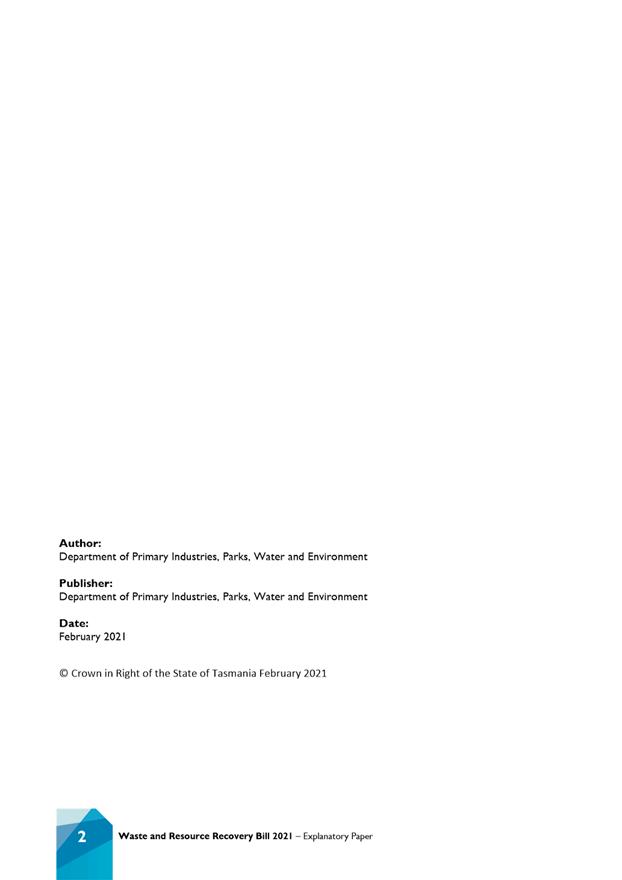

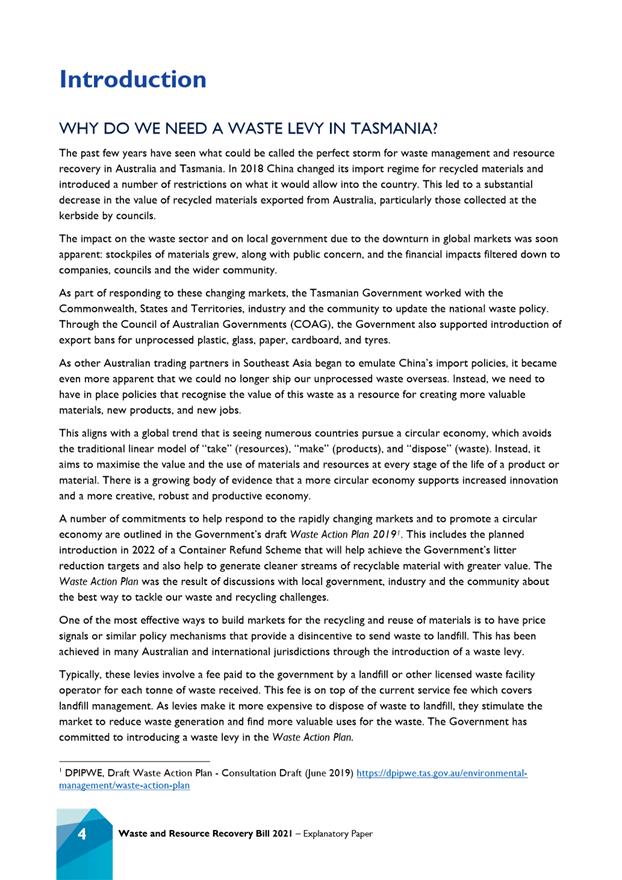
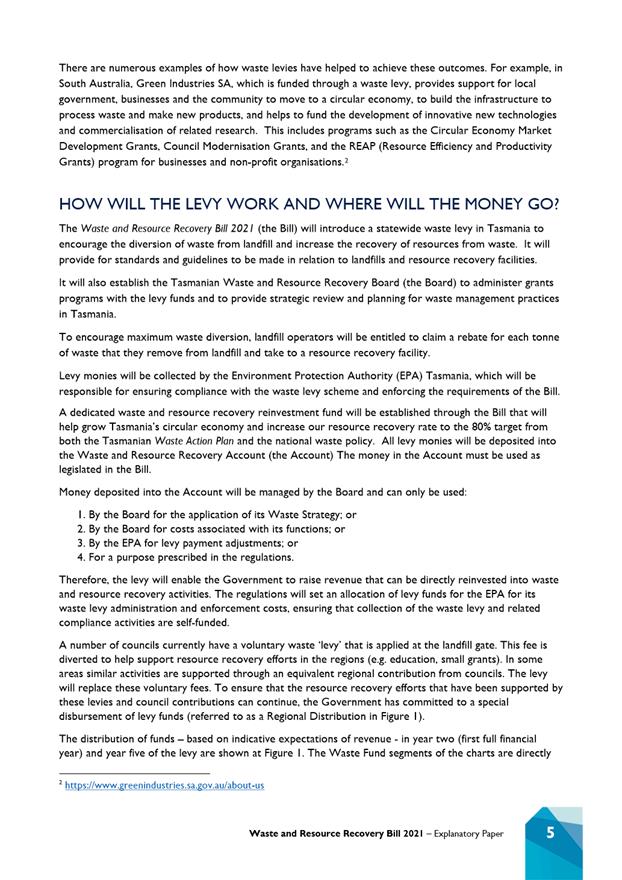
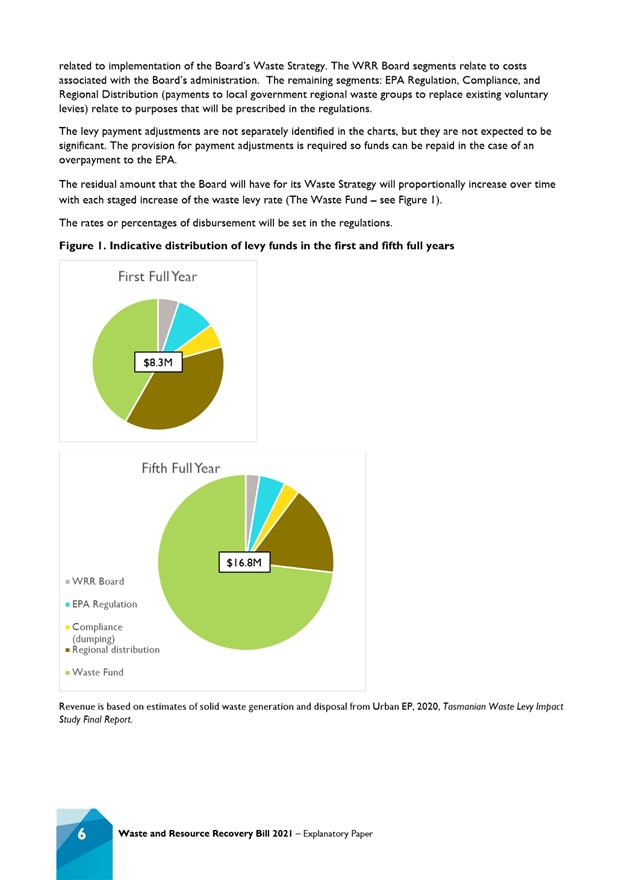
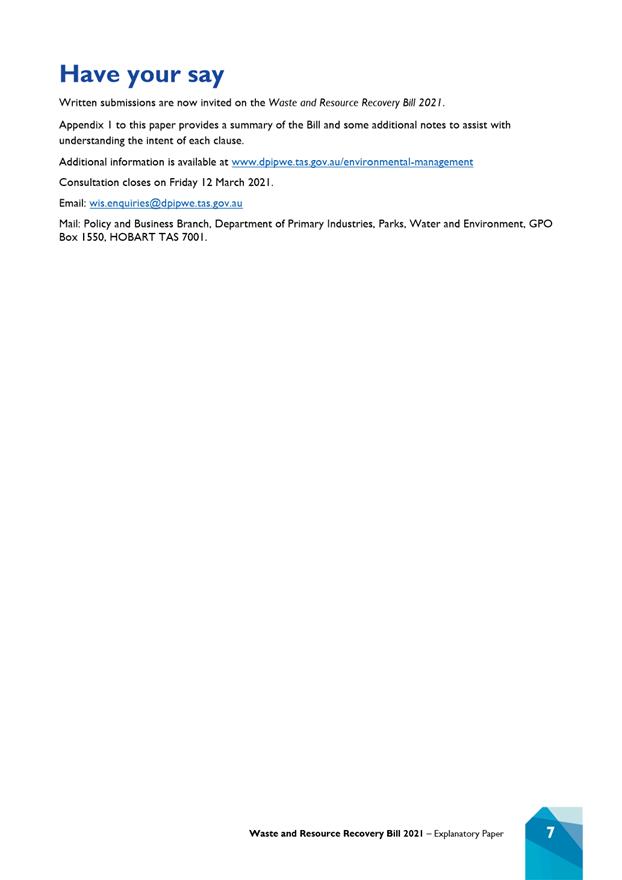
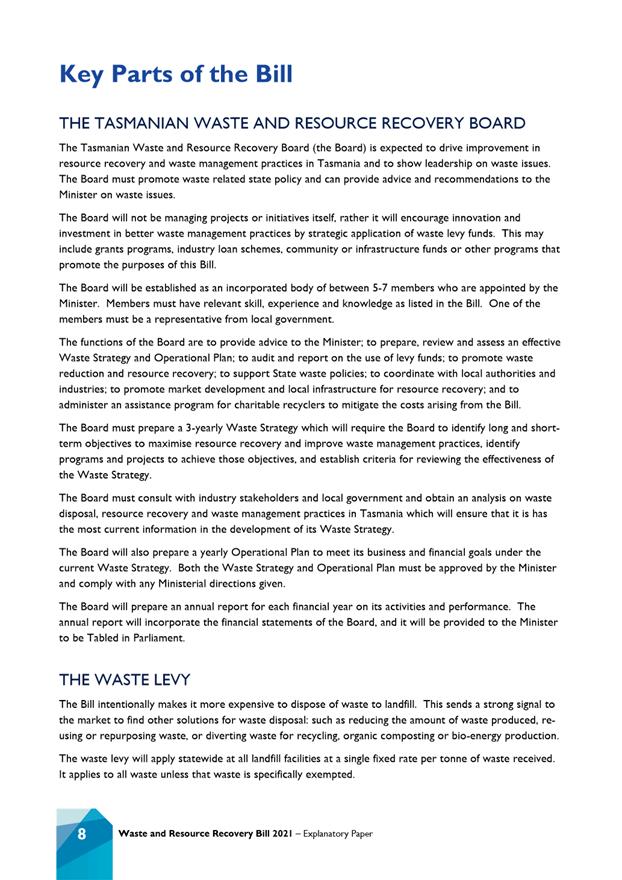
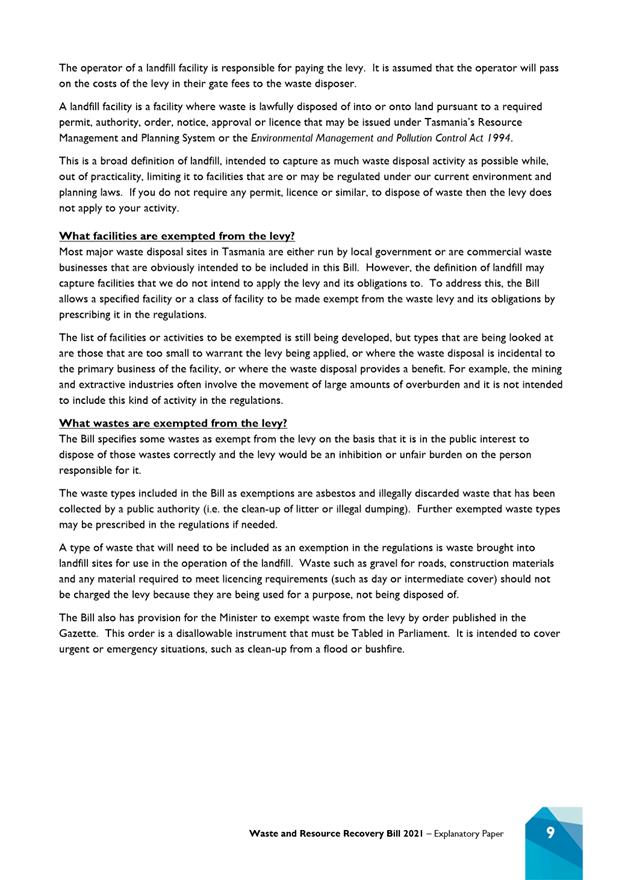


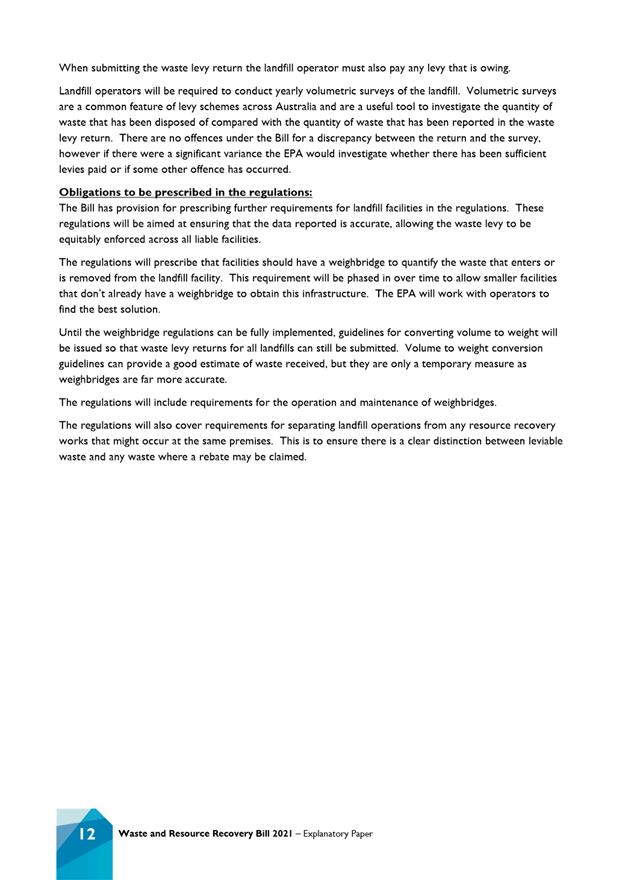



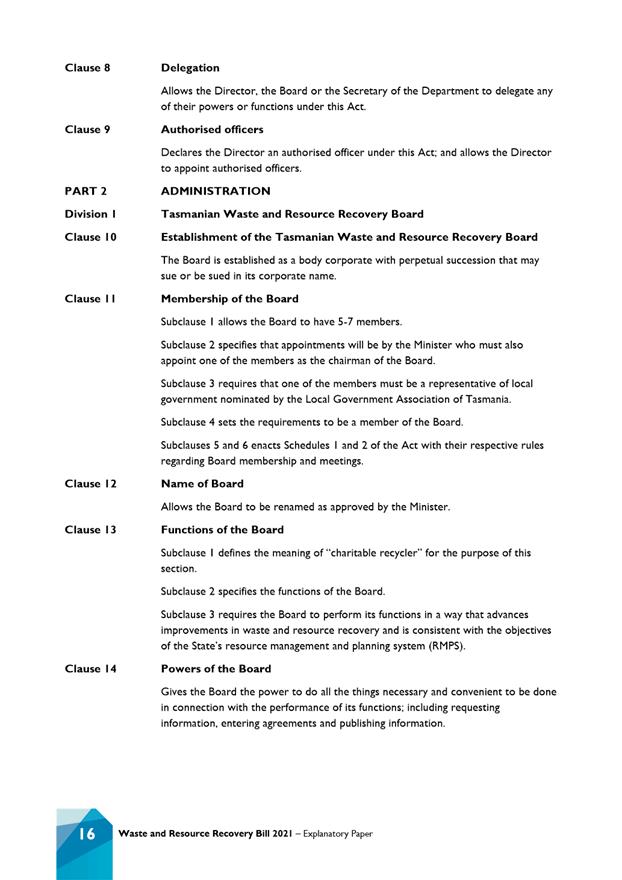
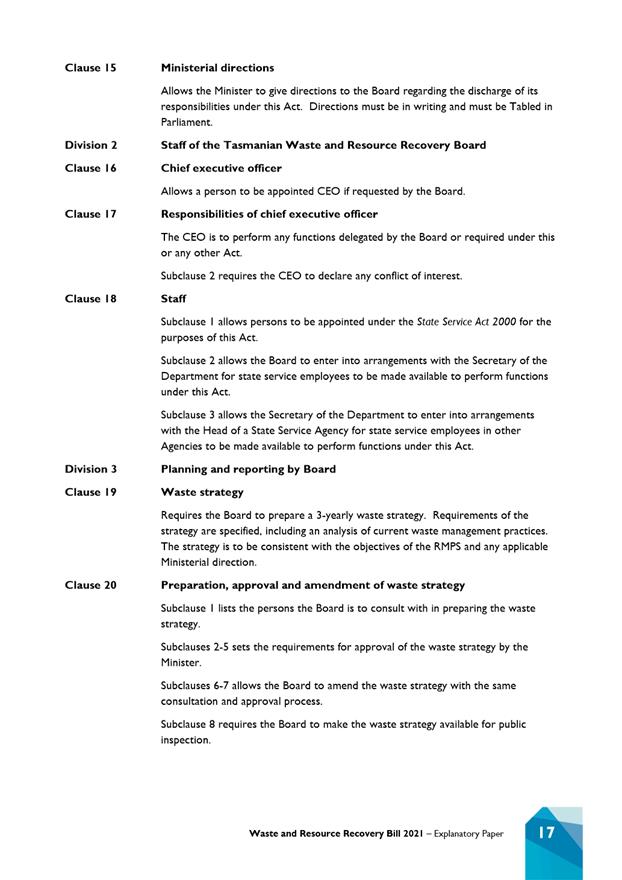
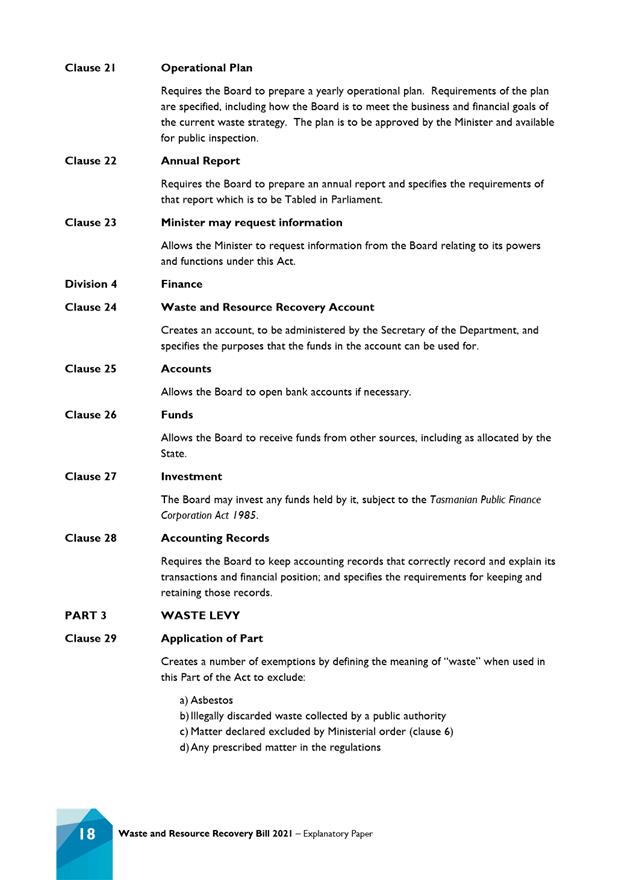
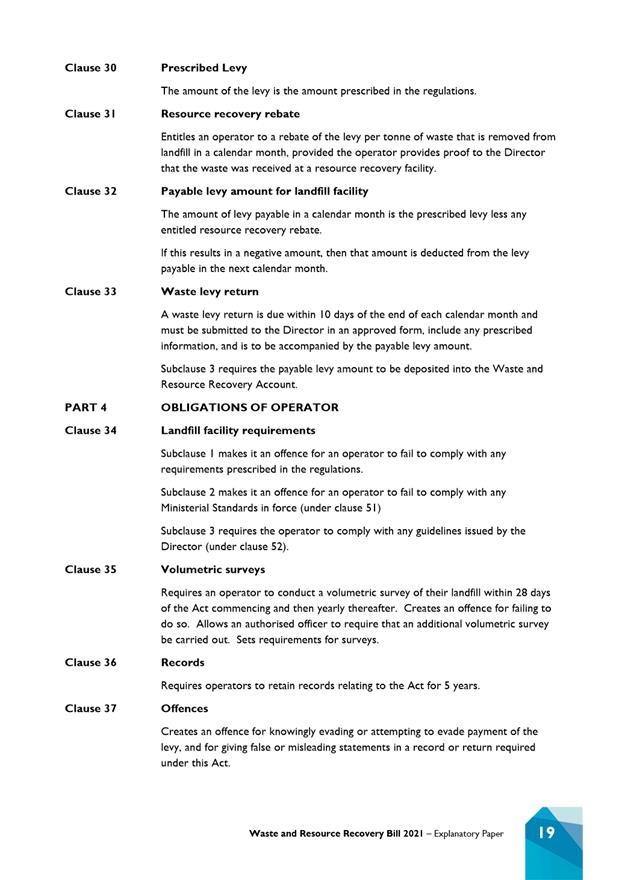

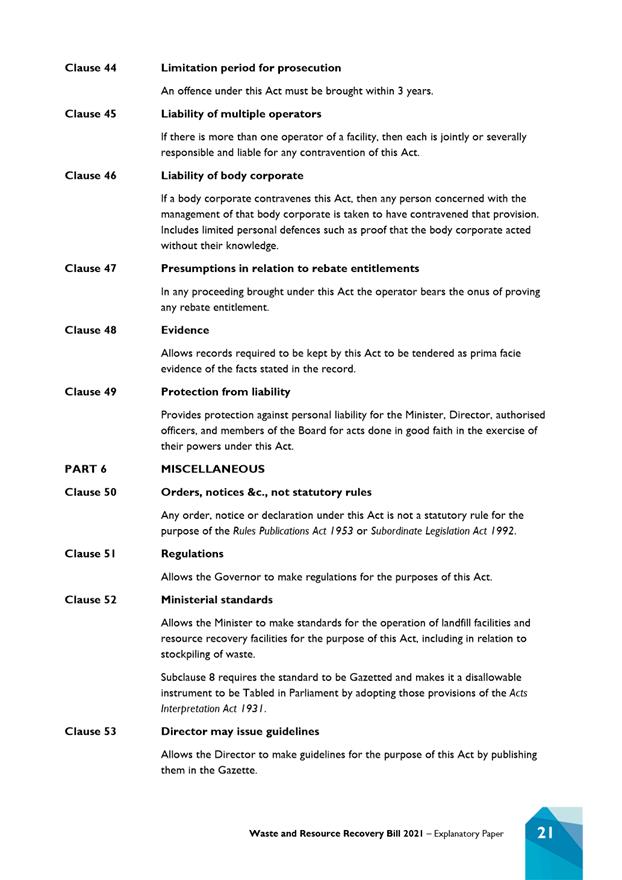

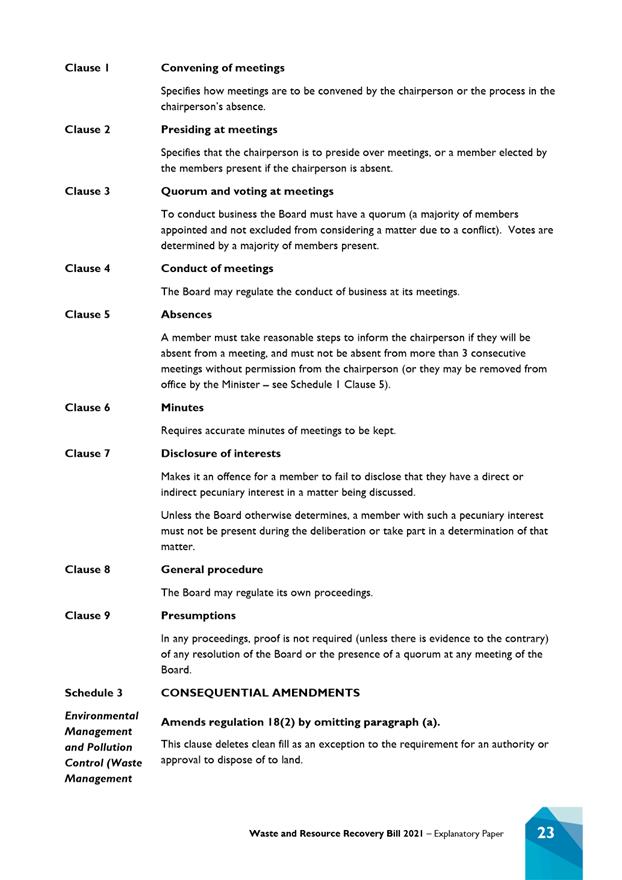
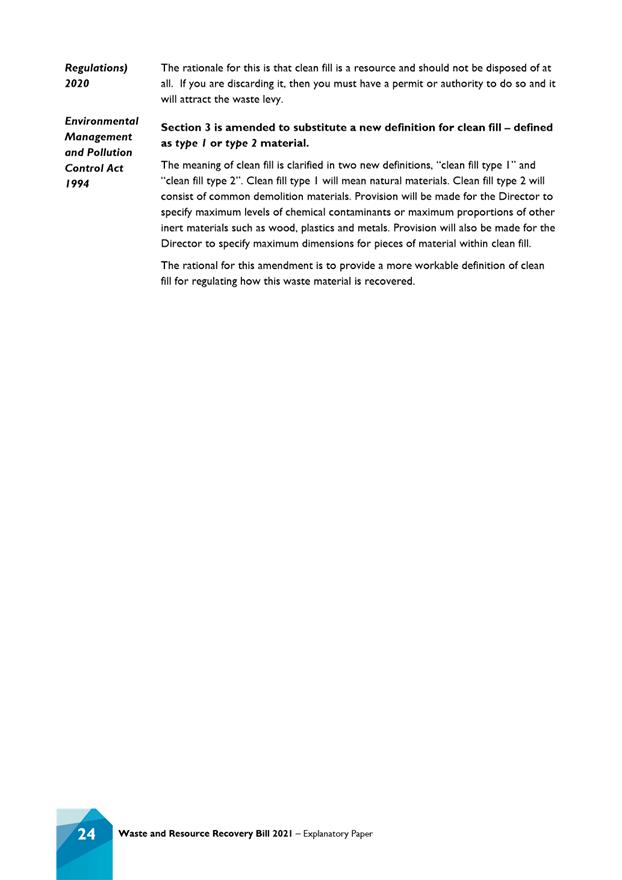


|
Agenda (Open Portion) City Infrastructure Committee Meeting |
Page 69 |
|
|
|
24/2/2021 |
|
6.5 Hobart Energy Use and Greenhouse Gas Emissions Annual Reports: 2018 - 2019 & 2019 - 2020
Report of the Senior Climate Change Officer and the Manager Smart & Sustainable City of 19 February 2021 and attachments.
Delegation: Committee
|
Item No. 6.5 |
Agenda (Open Portion) City Infrastructure Committee Meeting |
Page 75 |
|
|
24/2/2021 |
|
REPORT TITLE: Hobart Energy Use and Greenhouse Gas Emissions Annual Reports: 2018 - 2019 & 2019 - 2020
REPORT PROVIDED BY: Senior Climate Change Officer
Manager Smart & Sustainable City
1. Report Purpose and Community Benefit
1.1. This is the final report for the City’s 2010 – 2020 corporate energy and greenhouse gas program and the successful achievement of its reduction targets. It also provides the updates for the 2018 - 2019 and 2019 – 2020 annual reporting periods (Attachment’s A & B).
1.2. It
has been prepared in response to a City Infrastructure Committee resolution
made at its meeting of 19 September 2018, being:
“That a further report be provided in 12 months on the City’s
corporate greenhouse gas emissions and energy use.”
1.3. The reporting was delayed due to the Council’s restructure and reallocation of roles and responsibilities associated with the City’s energy and greenhouse gas emissions program, followed by the Covid public health emergency in early 2020.
2. Report Summary
2.1. The 2019 - 2020 Annual Report (Attachment B to this report) shows that the City achieved its corporate energy and greenhouse gas emissions targets, from 2010 levels by 2020, reducing its:
2.1.1. Energy use by 40.4% exceeding its 35% target;
2.1.2. Greenhouse gas emissions by 19.9% exceeding its 17% target.
2.2. Annual cost savings to the City, over the duration of the program, have resulted in savings of $1.2 million per annum.
Corporate Energy Use
2.3. The corporate energy target measured energy use (electricity and liquid fuel: petrol, diesel and gas) from across the councils corporate assets and services.
2.4. The 2019-2020 report showed that the Council reduced its energy use by 40.4% from 2010 to 2020. This has resulted in savings of 263,331 GJ over the decade.
Corporate Greenhouse Gas Emissions
2.5. The corporate emissions-target measured emissions from waste decomposition in the McRobies Gully Landfill, along with emissions associated with energy use: consumption of electricity; and fuels -petrol diesel and gas; across the Council’s assets and services.
2.6. The 2019-2020 annual report shows that the City exceeded its emissions target of 17% by reducing its corporate emissions by 19.9% (4,424 tonnes of carbon dioxide equivalent (tCO2-e)) from the 2009-2010 baseline year.
Energy Savings Reporting
2.7. Activities required to achieve the corporate targets were guided by the Energy Action Plans that are produced biannually, with annual update reports provided to measure progress towards its targets. Copies of the Energy Action Plans and Annual Reports are available on the City’s’ website https://www.hobartcity.com.au/City-services/Environment/Sustainable-Hobart/Reducing-the-City-of-Hobarts-energy-use.
2.8. The City’s program was widely recognised by local government across Tasmania and nationally, with knowledge and information on its actions learnings shared through Energy Tours with other southern councils. The program also informed the City’s corporate reporting requirements to the Global Covenant of Mayors for Climate and Energy using the Carbon Disclosure Project reporting platform.
2.9. On the 23 November 2020, the City of Hobart endorsed a 20% reduction in corporate greenhouse gas emissions by 2030 as part of the Sustainable Hobart Action Plan.
2.10. It is proposed that a further report be provided by April 2021 that identifies the next Energy Savings Action Plan measures to reduce greenhouse gas emissions and meet the associated target.
|
That: 1. A further report be provided by April 2021 that identifies the next Energy Savings Action Plan measures to reduce corporate greenhouse gas emissions by 20% on 2020 levels by 2030. 2. Opportunities for positive media about the City’s achievements in regard to greenhouse gas emissions and energy use be sought.
|
4. Background
4.1. The City, in 2014, established strategic and evidence-based corporate targets for its energy use and greenhouse gas emission of 35% and 17% respectively from 2010 levels by 2020. Energy Action Plans were produced to identify biannual tranches of actions and Annual Update reports were prepared to measure progress towards the targets.
4.2. The Energy Action Plans identified specific activities to reduce corporate energy use and associated greenhouse gas emissions, while the City’s Waste Management Strategy 2015-2030 incorporates actions to minimise greenhouse gas emissions related to waste.
4.3. The corporate emissions target built on an earlier target whereby the City’s emissions were successfully reduced by over 60% from 2000 levels by 2010; demonstrating a long-term commitment to continual improvement of its operations, sustainable and best practice action.
4.4. There was no previous corporate energy target (for the 2000 to 2010 period). However the inclusion of an energy target as part of the 2010‑2020 corporate targets enabled a deep dive into actions that have successfully resulted in improved energy performance across council assets and services significant cost savings to the Councils on its energy bills. It focused on the reduction of consumption of electricity and liquid fuels (diesel, petrol, gas) across corporate assets including: fleet, buildings, recreational assets, pumps and streetlights etc.
4.5. In terms of Council’s corporate emissions these are measured across two areas of emissions, those:
4.5.1. Directly emitted (Scope 1) from Council activities: methane (CH4) from the long term decomposition of waste in McRobies Gully Landfill (CH4 is 25 times more potent greenhouse gas than carbon dioxide); and carbon emissions associated with combustion of fuels (petrol and diesel) for vehicles and fleet; and natural gas used in facilities; and
4.5.2. Resulting from the processes of generating, transmitting and distributing electricity (Scope 2) that is consumed across the Council’s assets: buildings, streetlights and pumps etc.
4.6. The 2018-2019 reporting cycle was delayed due to the restructure of the Council’s Divisions and the reallocation of roles and responsibilities combined with the effects of the public health emergency.
4.7. The annual reporting is also used to inform the Council’s annual reporting requirements to the Global Covenant of Mayors for Climate & Energy, for which it is a member.
Key actions and savings
4.8. Greenhouse gas emissions from the McRobies Gully Waste Management Centre continue to decrease due to the higher amounts of waste diversion away from landfill, in part due to the new Food Organic Green Waste Organic (FOGO) Services introduced in November 2019. This was the main contributor to the reduction in emissions compared to the previous year.
4.9. Cogeneration of landfill emissions continues to show a progressive decline as legacy emissions are destroyed.
4.10. The City’s energy use also continued to decline and was 8.1% lower than the previous year. Since 2009-2010 use has been reduced by 40.4% achieving the energy reduction target of 35% in 2019-2020.
4.11. A number of energy efficiency and renewable energy projects were completed in the 2019-2020 year, though less than in previous years due to COVID19. The most significant works were heating upgrades at the Council Centre and the Town Hall, alongside Argyle Street Carpark toilet facility upgrades and LED lighting upgrades in the Elizabeth Street Mall.
4.12. The total cost of building upgrades was $143,500. This investment is expected to return $559,000 in energy savings, 780 tCO2e in greenhouse gas savings to City of Hobart over the next decade.
4.13. The City’s corporate Energy Action Plan for the period 2018 to 2020 was endorsed by the Council in October 2017. Of the actions listed in this Plan, 36 have been completed or are in progress and 28 are yet to be commenced. In addition, a further eight projects not listed in the Plan were completed.
5. Proposal and Implementation
5.1. A further report be provided by April 2021 that identifies the next Energy Savings Action Plan measures to reduce corporate greenhouse gas emissions by 20% on 2020 levels by 2030. The Energy Savings Action Plan’s outlines the actions over the next three years to achieve the target and annual update reports measure the City’s progress towards its new target each year.
5.2. The information provided in the annual report (Attachment A to this report) will be finalised in line with corporate branding requirements and be published on the City’s website.
6. Strategic Planning and Policy Considerations
6.1. The projects undertaken to reduce energy use and greenhouse gas emissions support the Capital City Strategic Plan 2015 – 2025, specifically;
6.1.1. Objective 6.3.4: Pursue corporate and community environmental sustainability.
6.1.2. Objective 6.3.3: Extend the City’s sustainability leadership in energy and closed loop resource systems.
6.1.3. Objective 6.4.1: Adopt a holistic approach to climate change mitigation and adaptation across all pillars of the strategic plan.
6.1.4. Objective 7.3.2 Enhance asset management practices, to ensure assets meet future needs and respond to the impacts of climate change.
7. Financial Implications
7.1. Funding Source and Impact on Current Year Operating Result
7.1.1. In 2019-2020 the funding of greenhouse gas emission and energy use reduction projects was provided from several sources, including the Greenhouse Gas Reserve Fund (which is set at $100,000 per annum), an amount of $100,000 per year to implement capital projects listed in the Energy Savings Action Plan and more significantly from project specific budget allocations.
7.2. Impact on Future Years’ Financial Result
7.2.1. The primary source of energy efficiency investment is a nominal allocation of $300,000 in the Sustainable Hobart Action Plan.
7.2.2. As projects are implemented savings in energy and maintenance costs are identified and incorporated into forward budgets.
7.2.3. Where significant further cost effective projects are identified and cannot be accommodated within available budget allocations, reports will be provided to the Council seeking funding approval on a project by project basis.
7.3. Asset Related Implications
7.3.1. Asset related considerations and life cycle costs are taken into account in the assessment of each project.
8. Legal, Risk and Legislative Considerations
8.1. There are no legislative requirements in regard to energy use or greenhouse gas emissions, with the City’s facilities being below national greenhouse gas reporting thresholds.
8.2. Reduction in energy use lowers the financial risk to the City in regard to any future increases in energy charges.
9. Environmental Considerations
9.1. In addition replacement of mercury vapour and fluorescent lights with LED technology is reducing the waste and recycling issues associated with mercury.
9.2. Energy and greenhouse gas emissions are continuing to be lowered as the result of projects and operational improvements and thus reducing the City’s environmental footprint.
10. Marketing and Media
10.1. There is potential for positive media on the City’s successful achievement of its corporate energy and greenhouse targets.
10.2. The annual report, provided as Attachment A, will be published on the City’s website.
11. Delegation
11.1. This is a matter for the City Infrastructure Committee to consider.
As signatory to this report, I certify that, pursuant to Section 55(1) of the Local Government Act 1993, I hold no interest, as referred to in Section 49 of the Local Government Act 1993, in matters contained in this report.
|
Katrina Graham Senior Climate Change Officer |
Robert Stevenson Manager Smart & Sustainable City |
Date: 19 February 2021
File Reference: F20/114066
Attachment a: 2018/2019
Annual Report ⇩
![]()
Attachment b: 2019/2020
Annual Report ⇩
![]()
|
Item No. 6.5 |
Agenda (Open Portion) City Infrastructure Committee Meeting - 24/2/2021 |
Page 99 ATTACHMENT a |
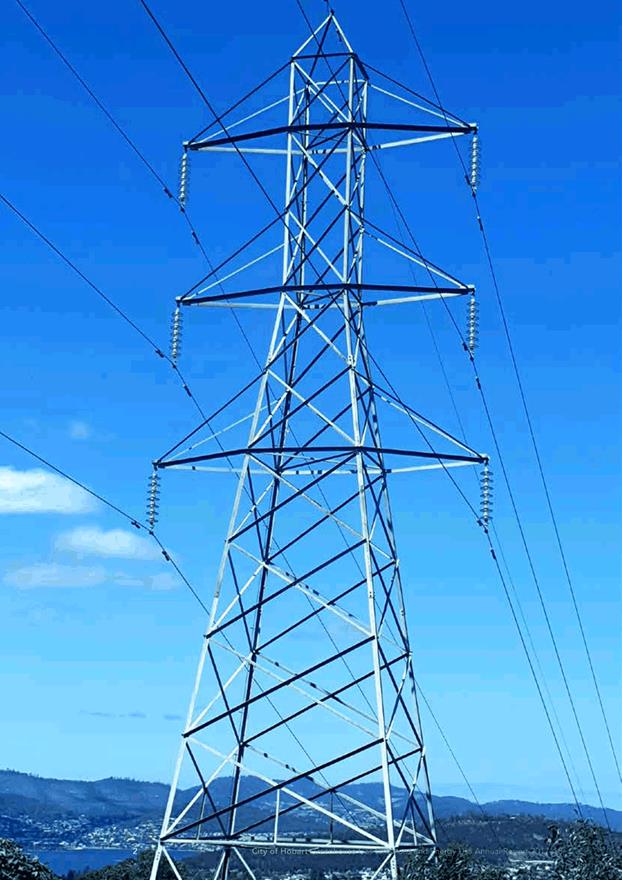
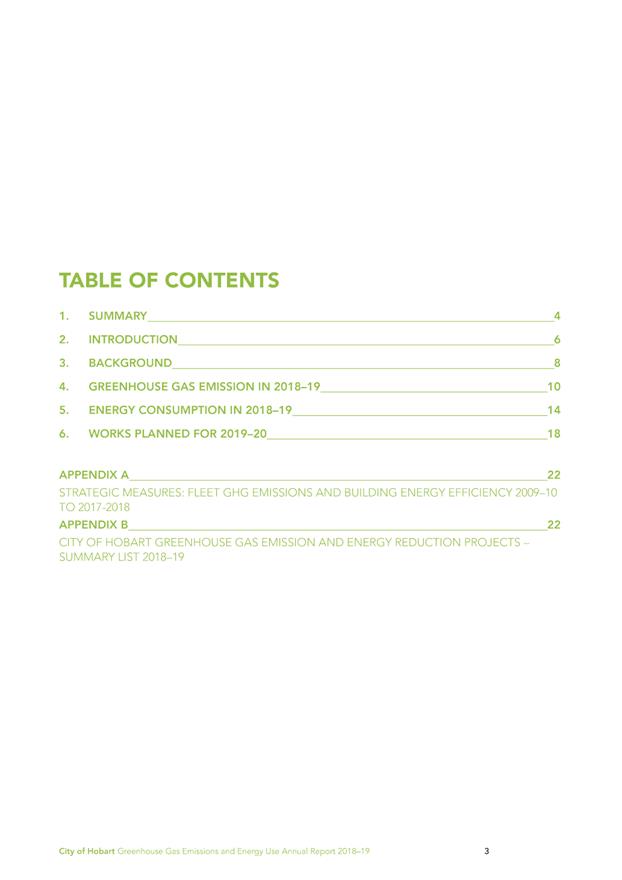
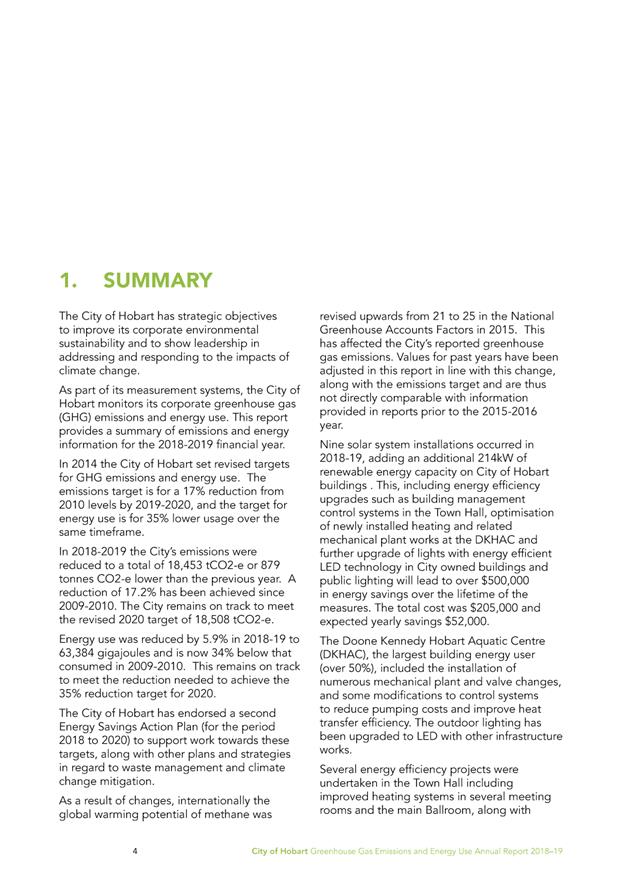
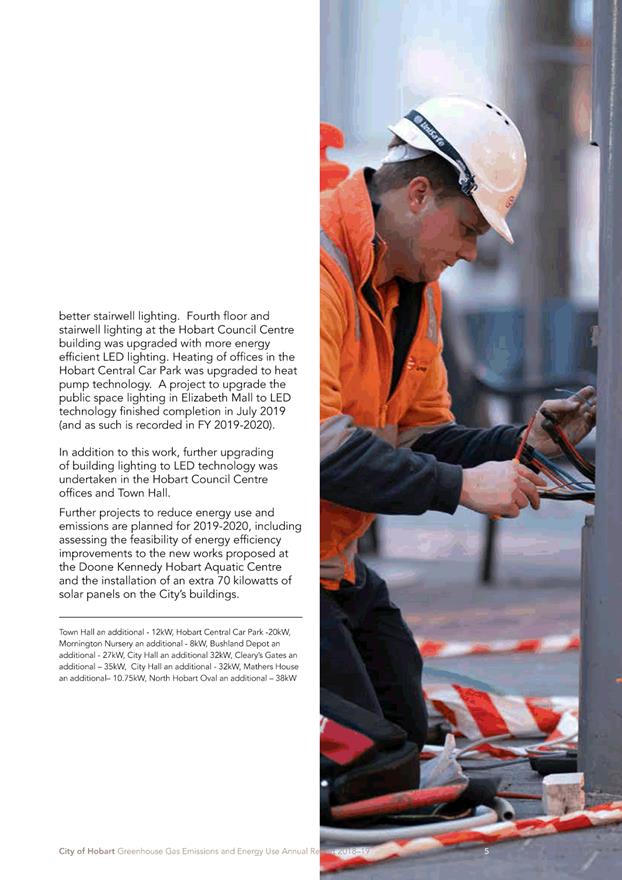

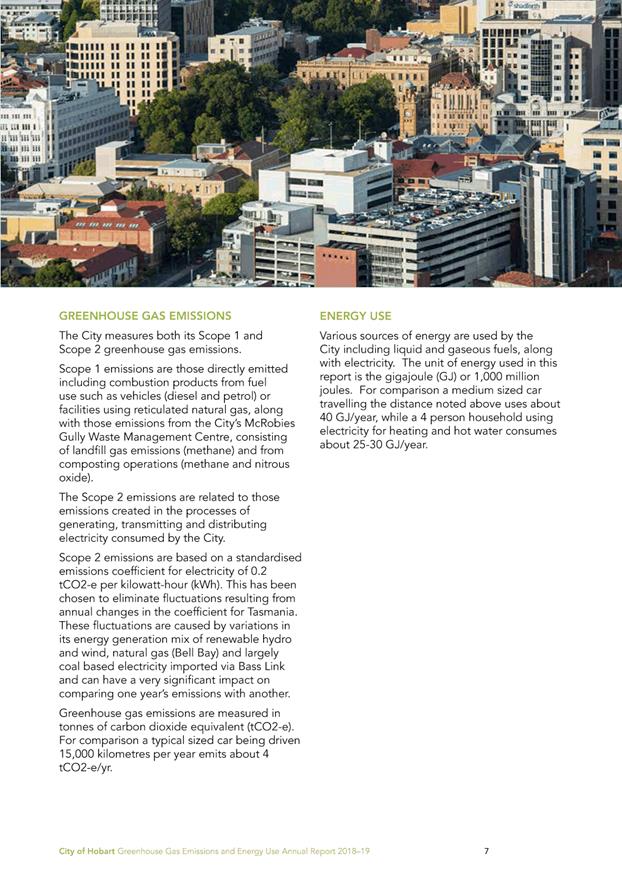
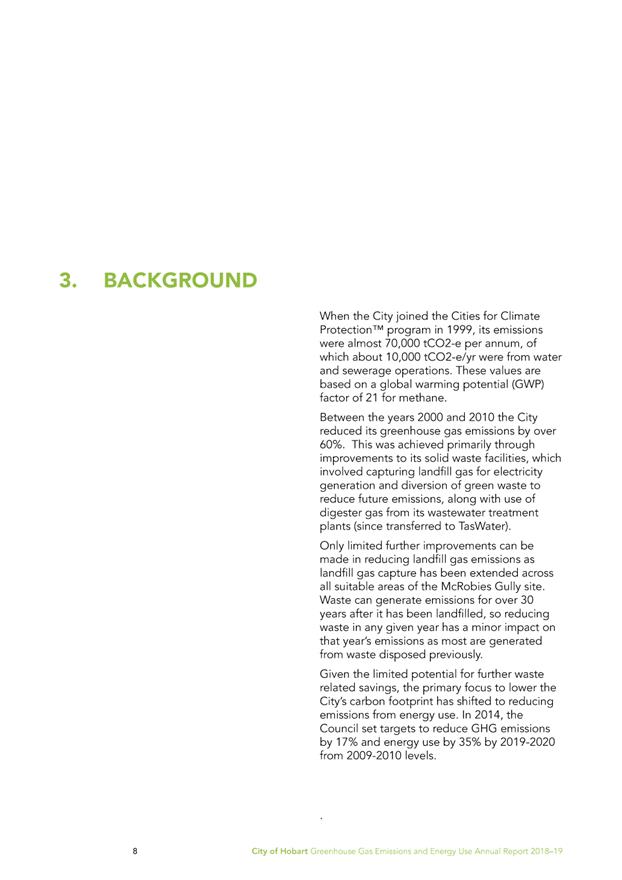
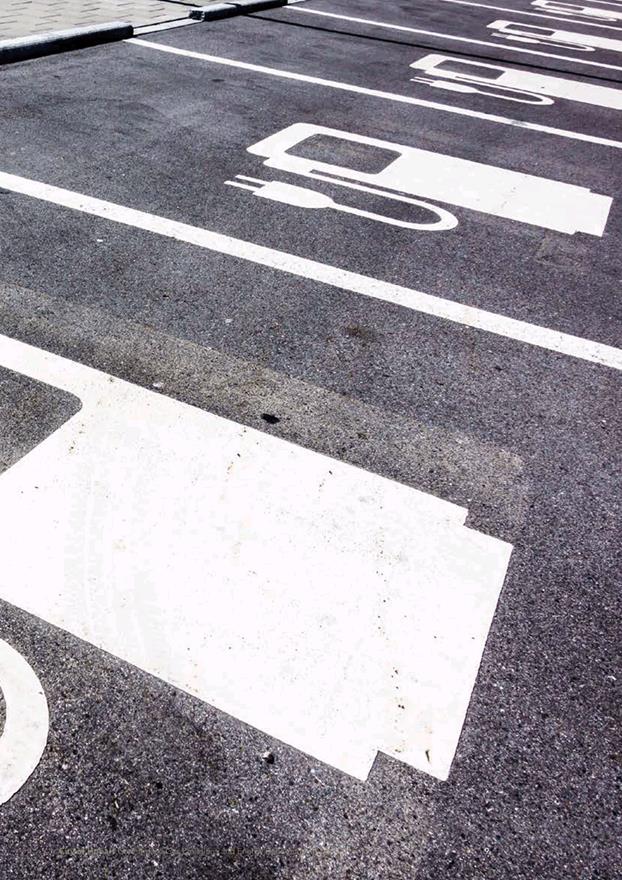

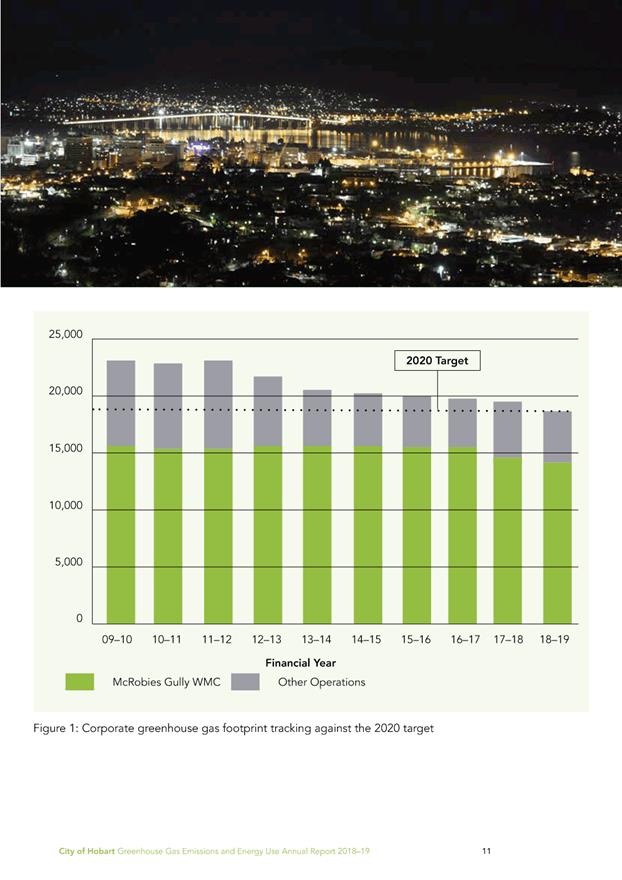
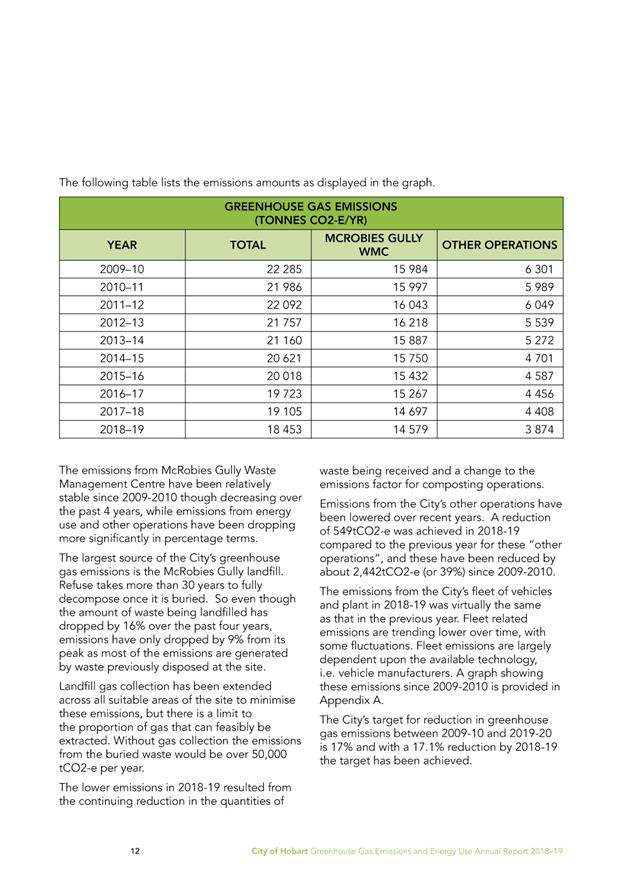
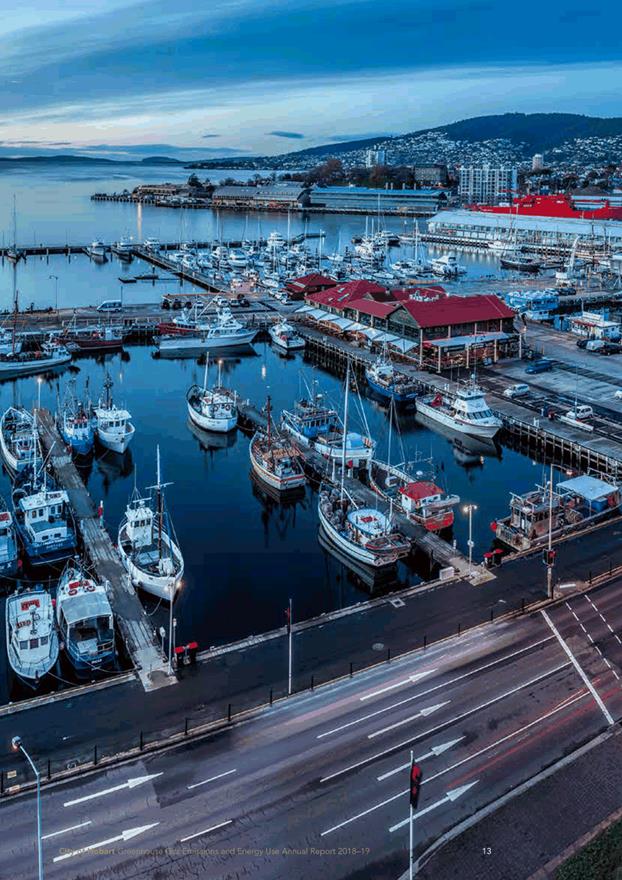

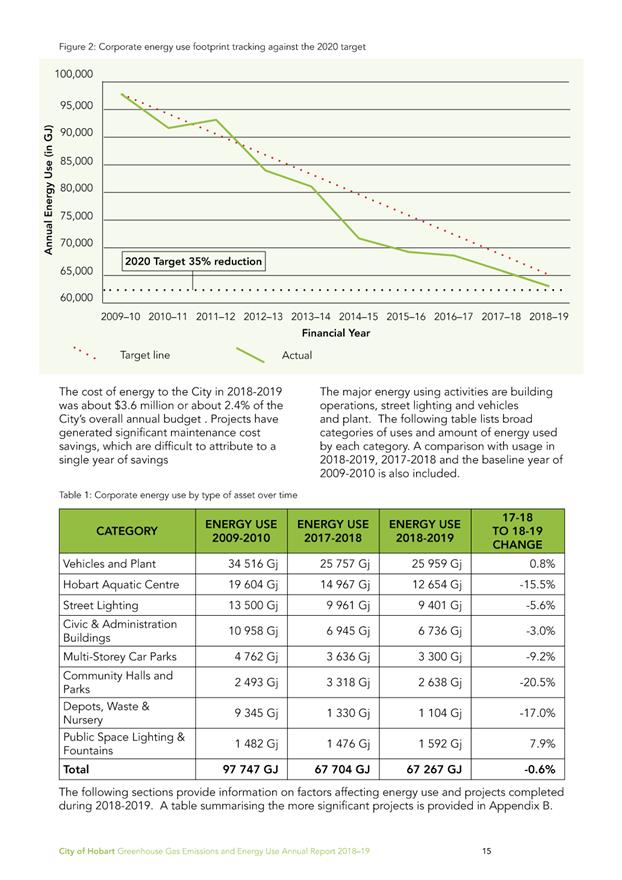



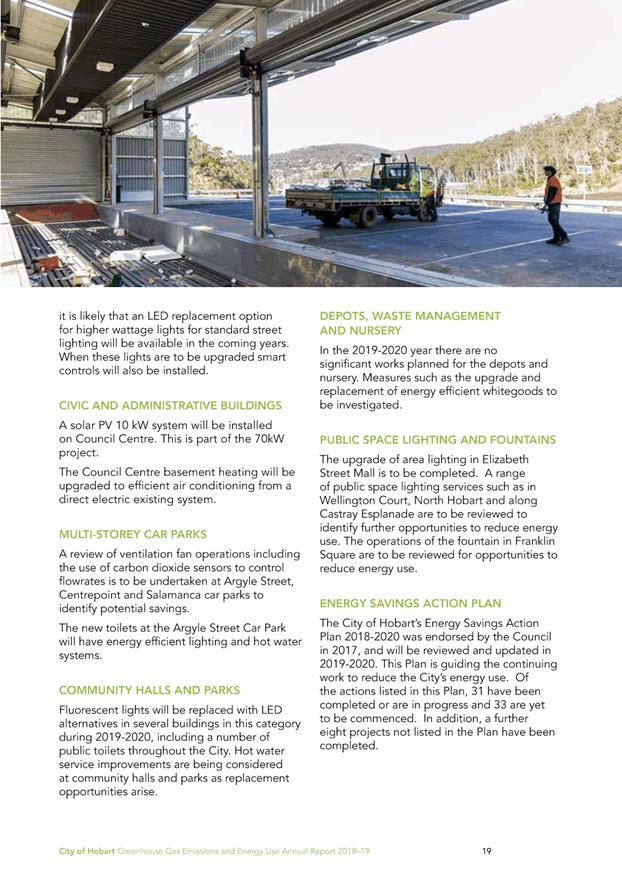
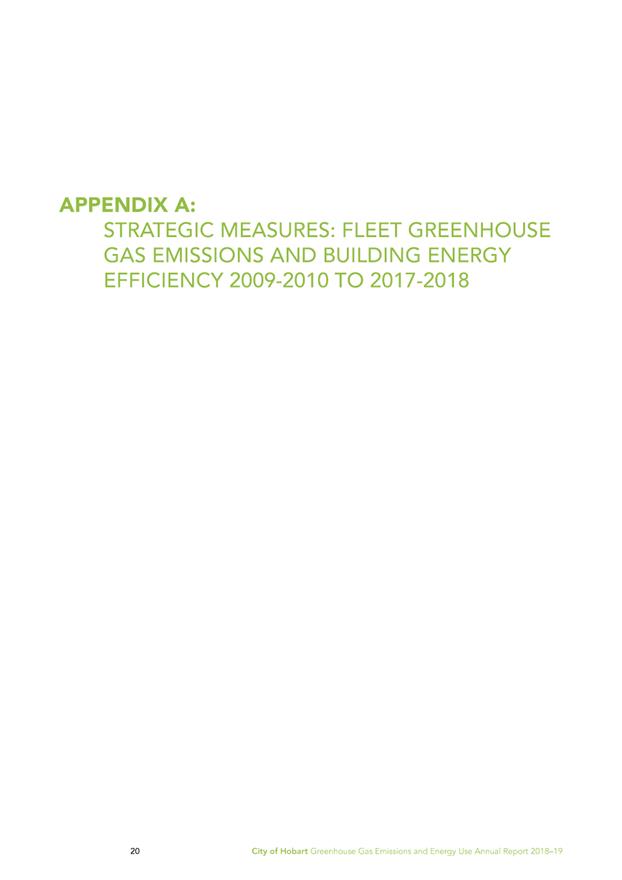

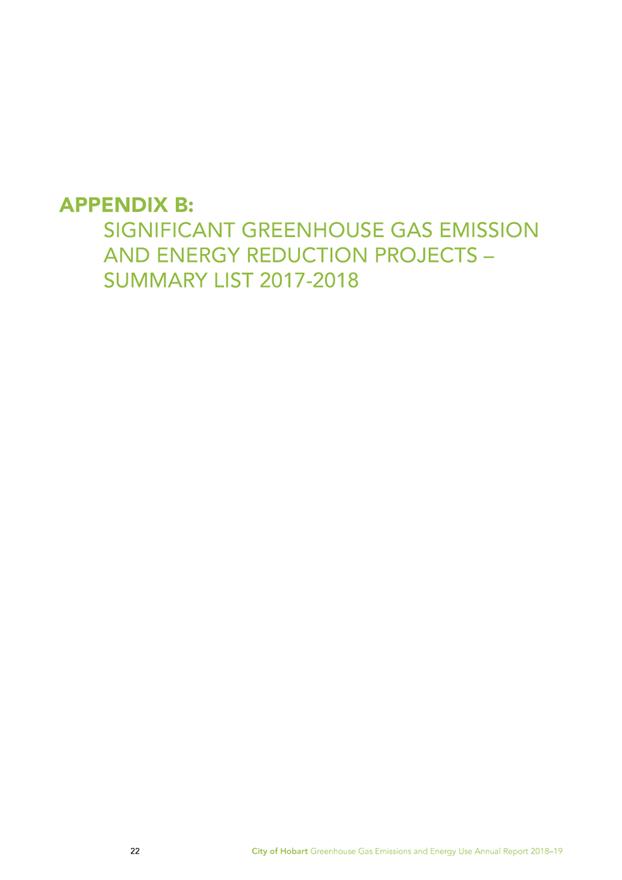
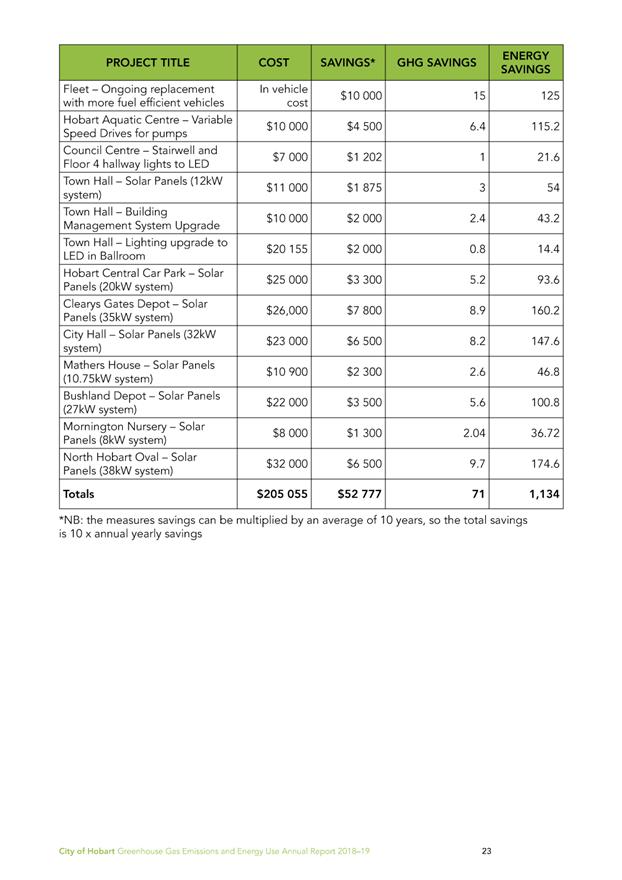

|
Agenda (Open Portion) City Infrastructure Committee Meeting - 24/2/2021 |
Page 117 ATTACHMENT b |
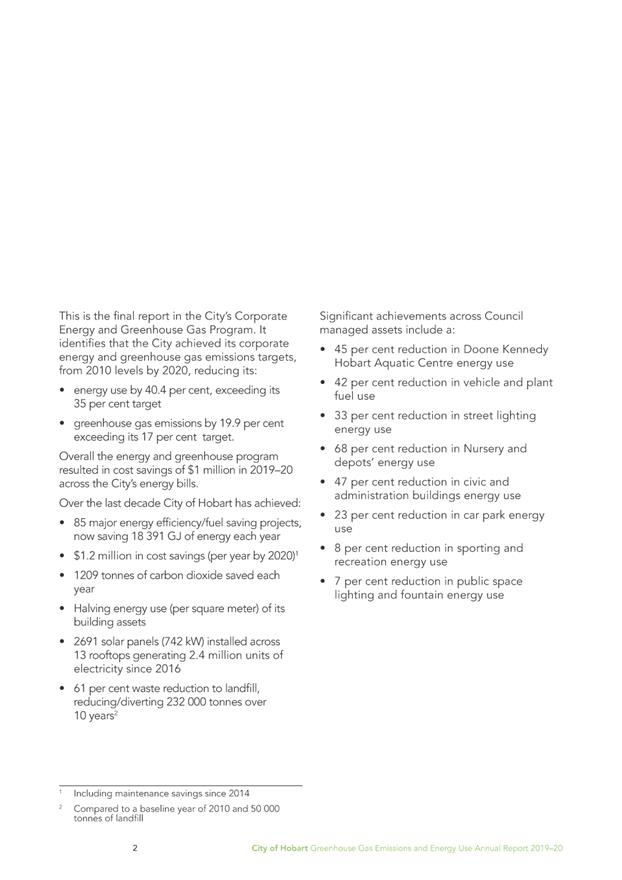
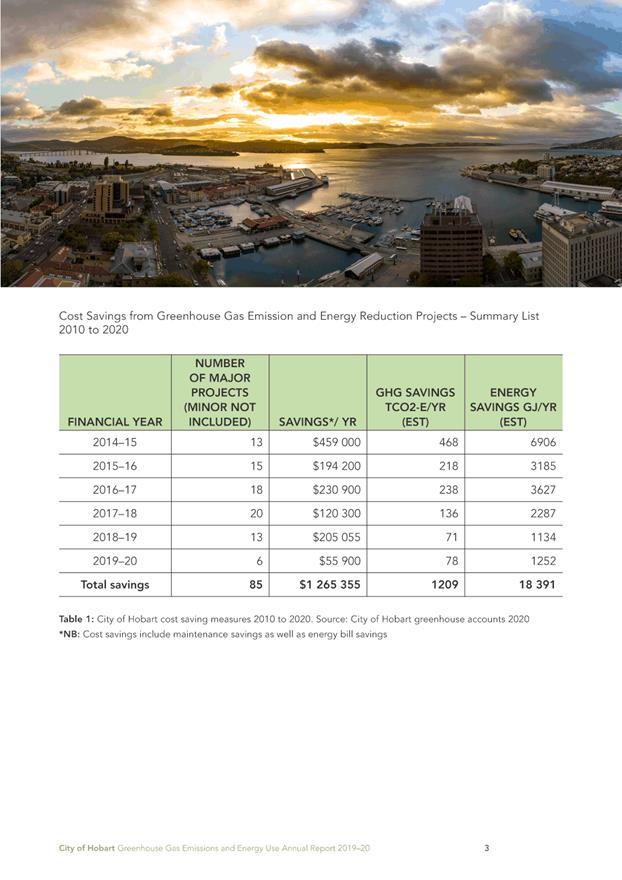
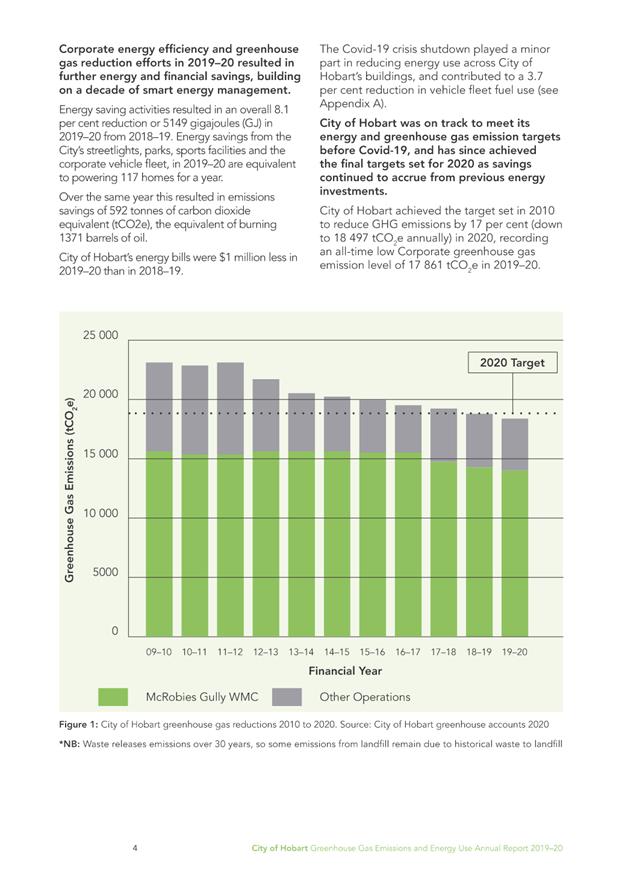
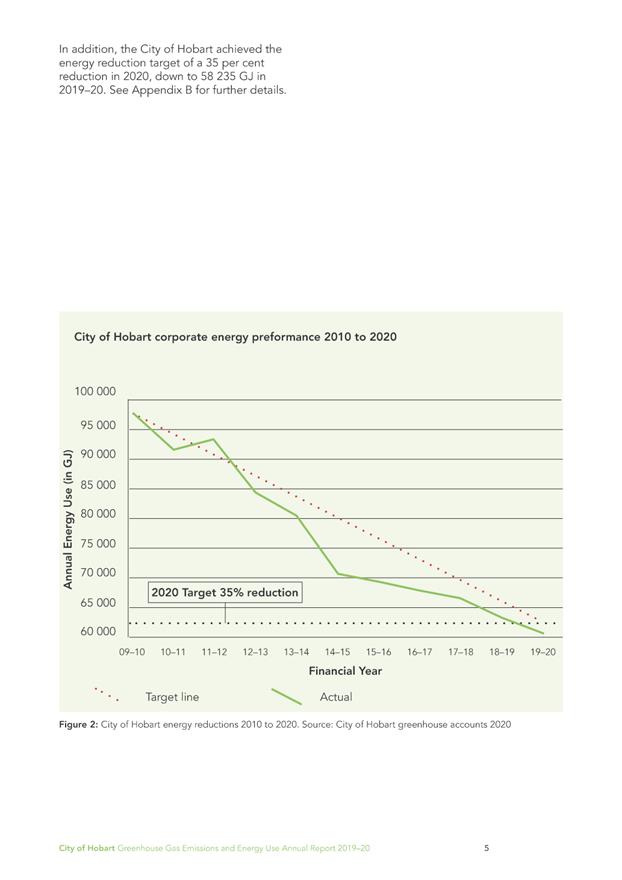
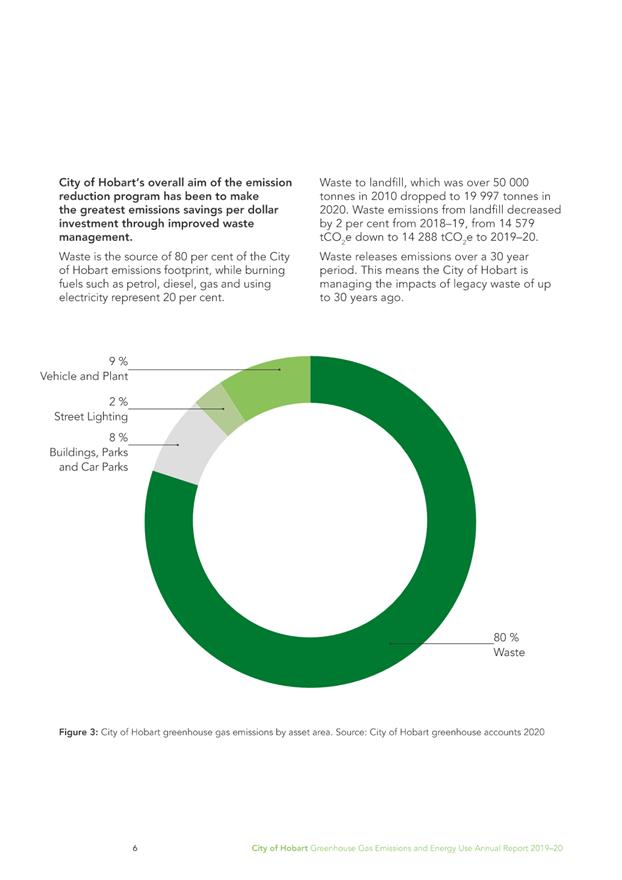
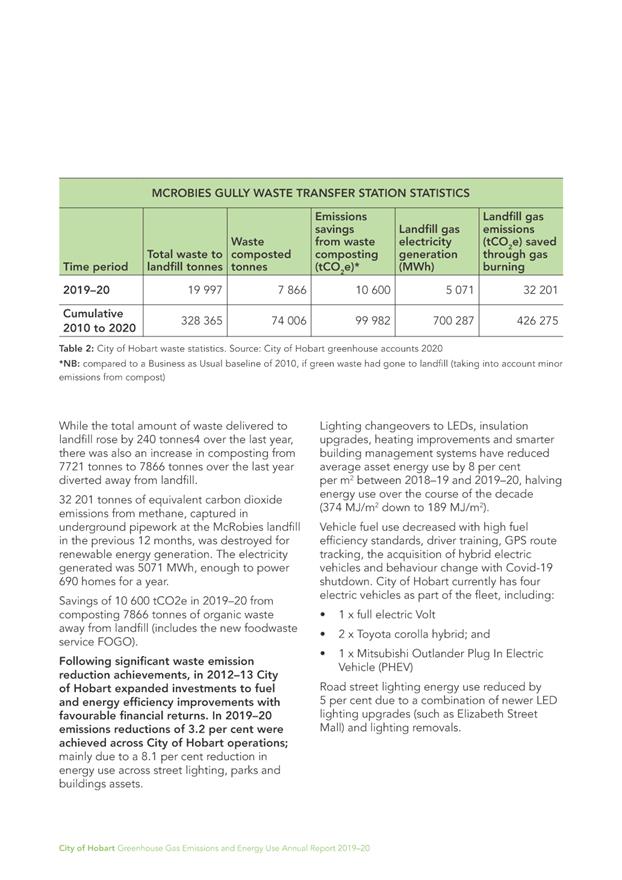


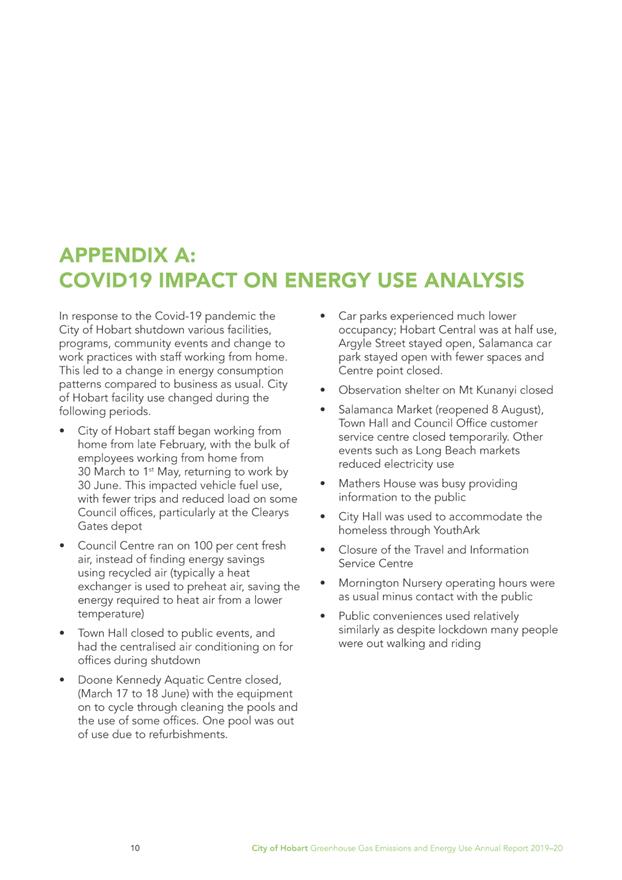
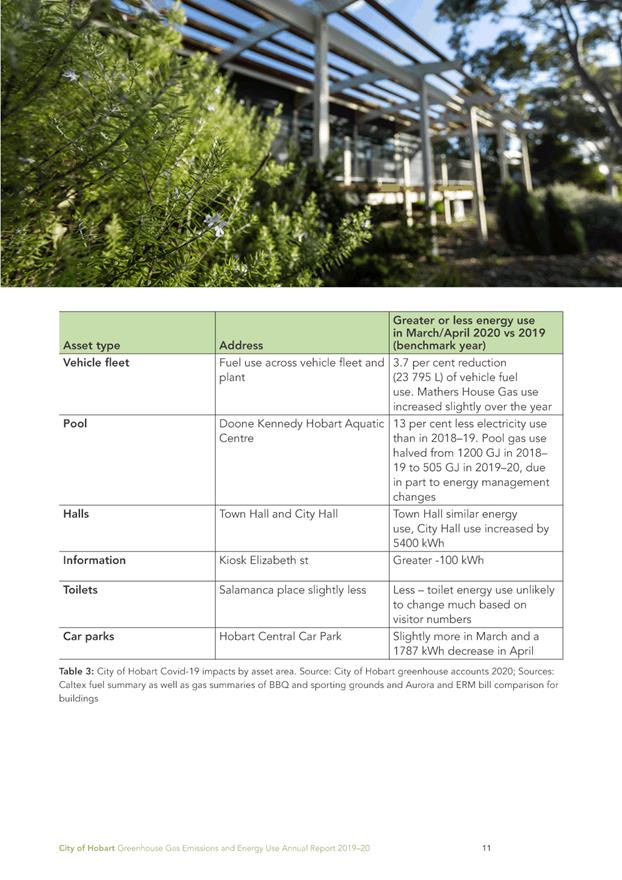

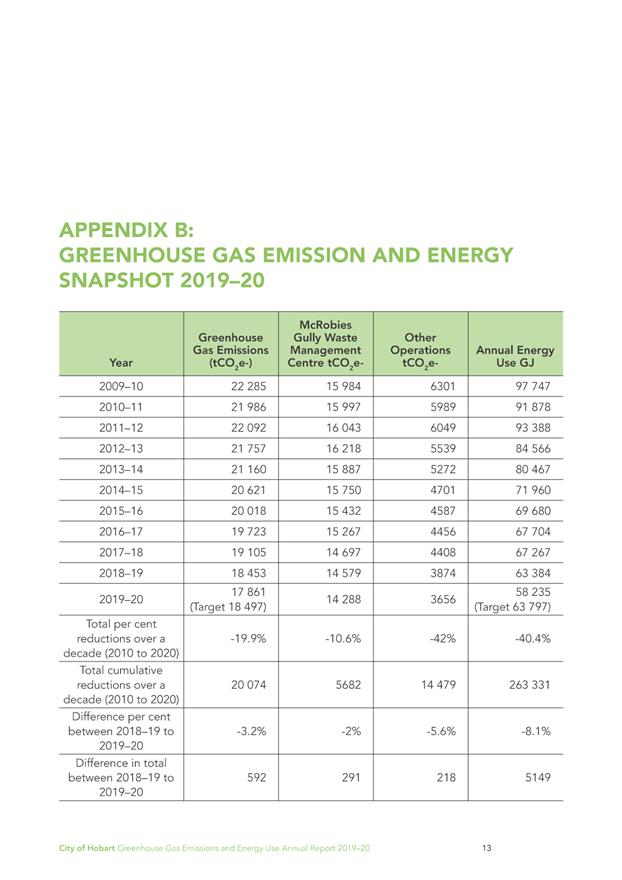
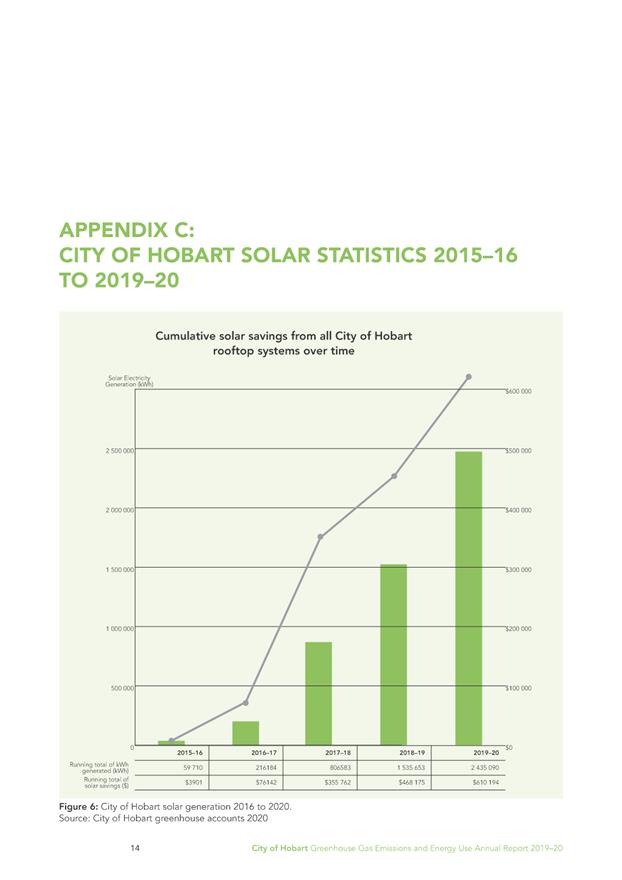

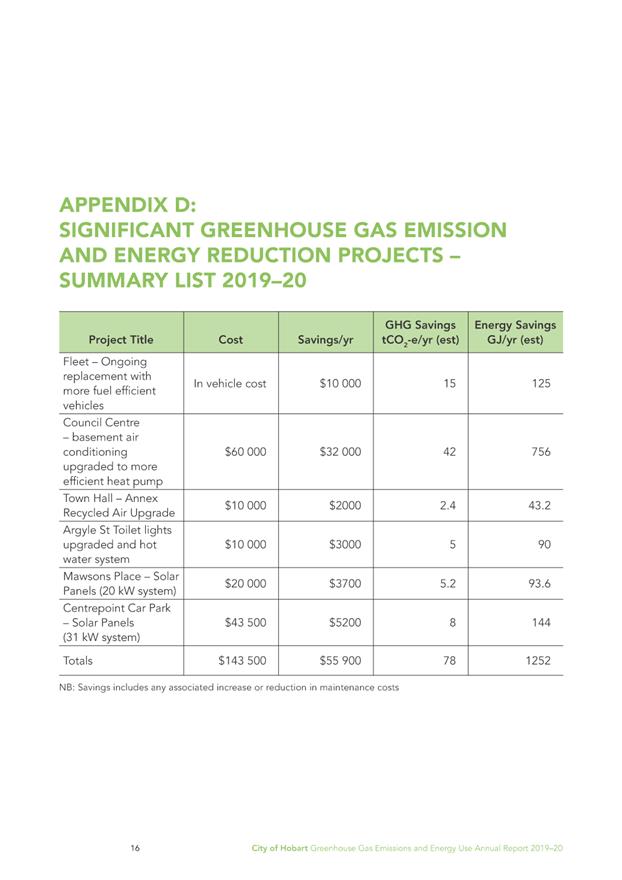
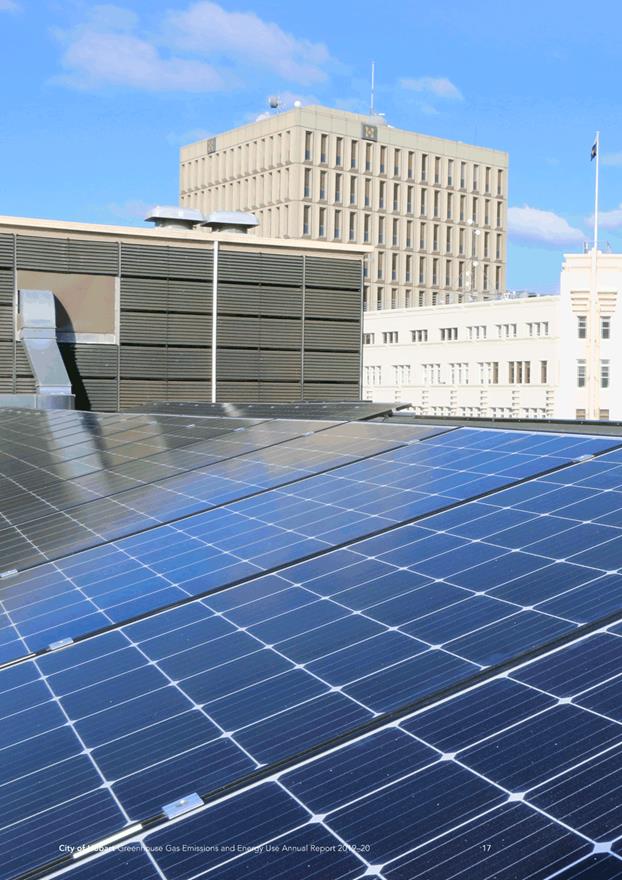

|
Agenda (Open Portion) City Infrastructure Committee Meeting |
Page 118 |
|
|
|
24/2/2021 |
|
A report indicating the status of current decisions is attached for the information of Elected Members.
REcommendation
That the information be received and noted.
Delegation: Committee
|
Item No. 7.1 |
Agenda (Open Portion) City Infrastructure Committee Meeting - 24/2/2021 |
Page 144 ATTACHMENT a |
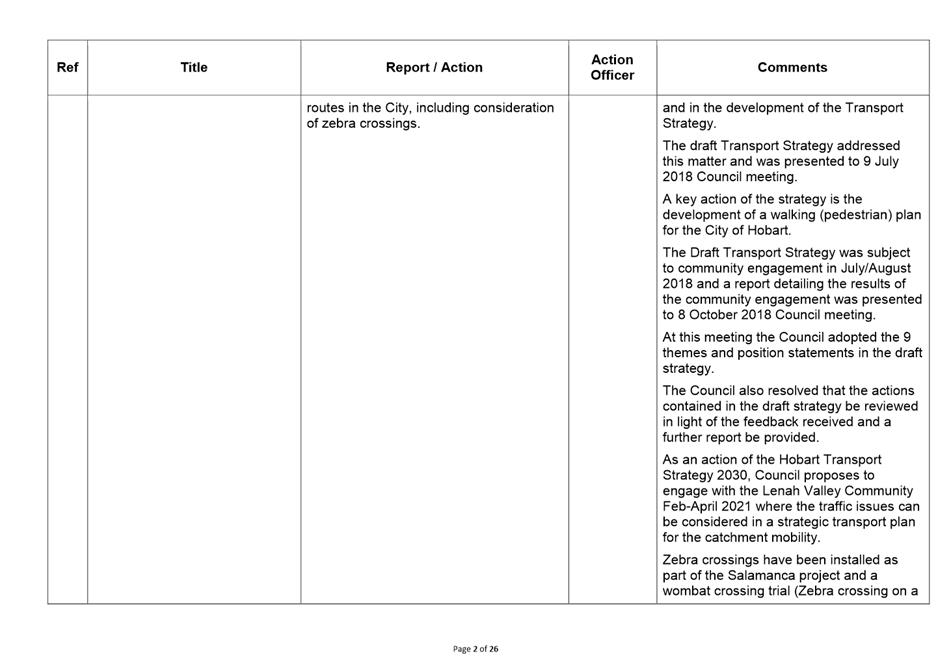


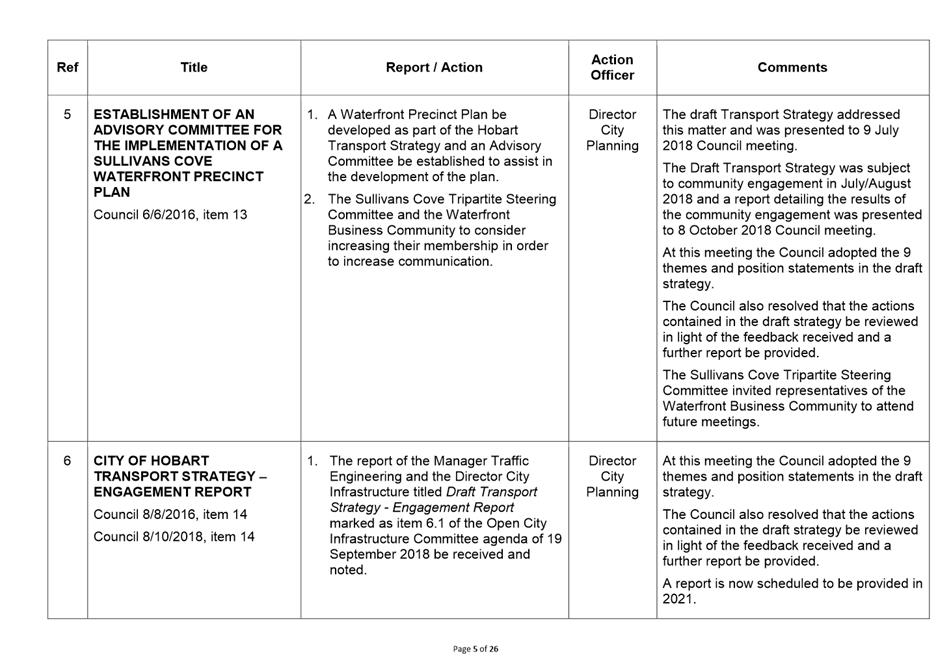

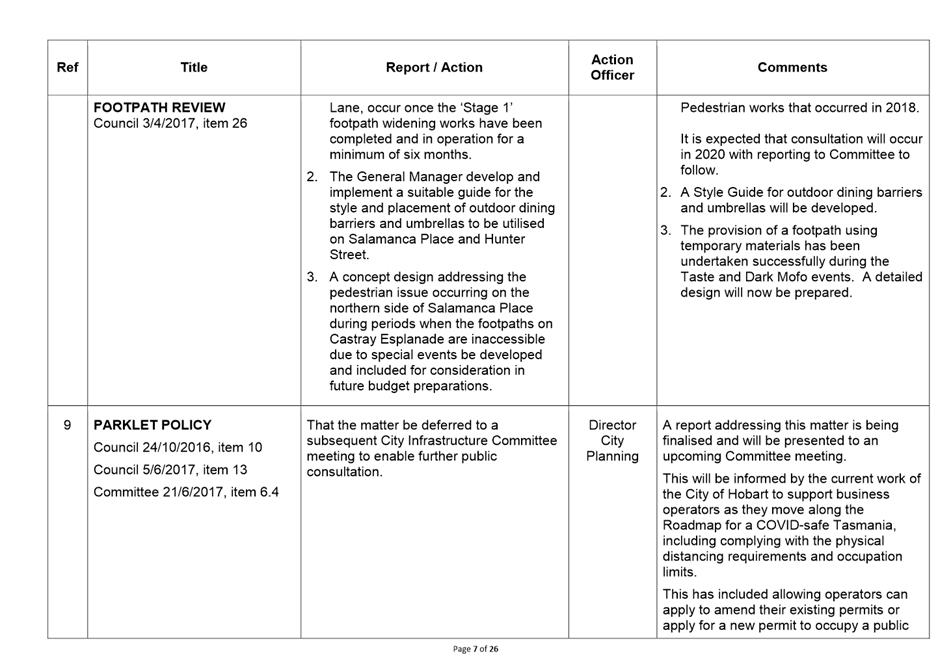
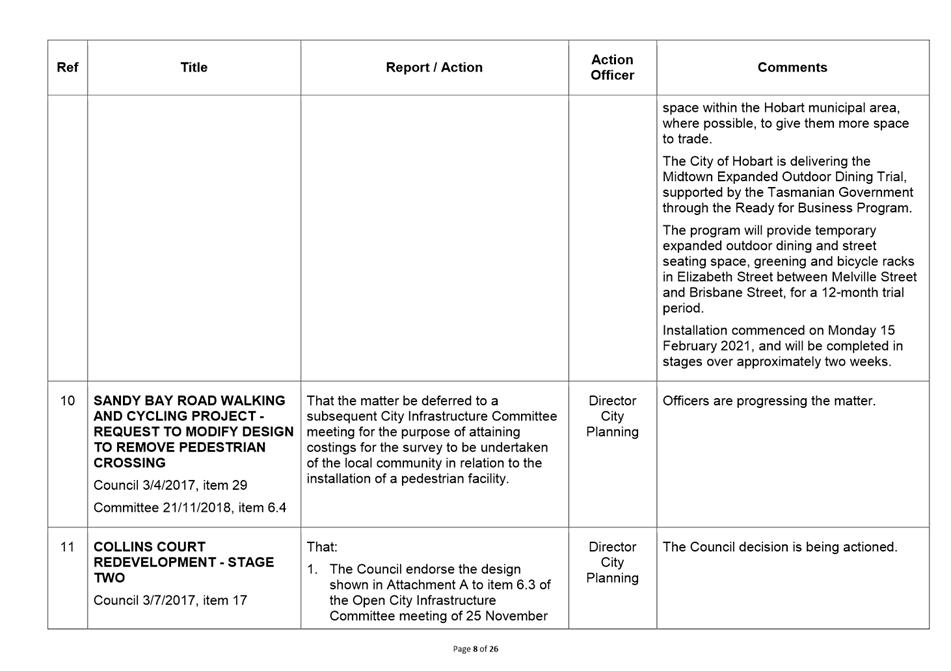


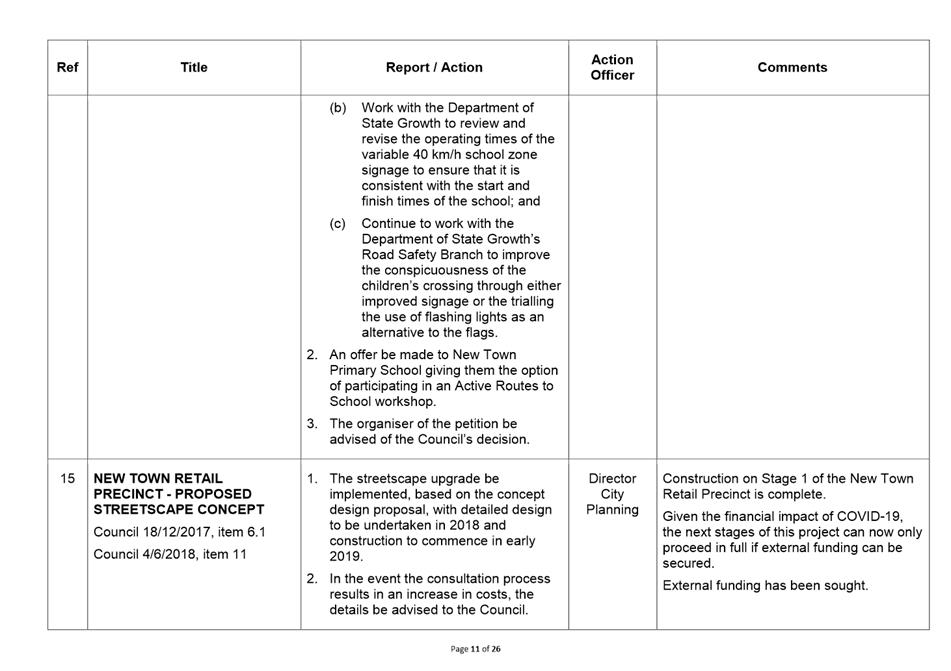
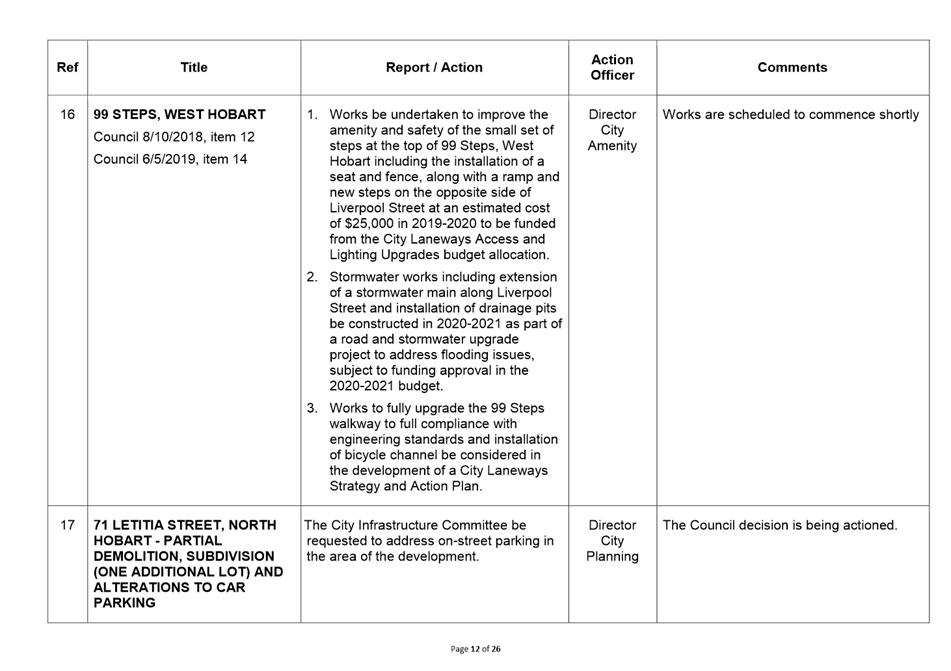
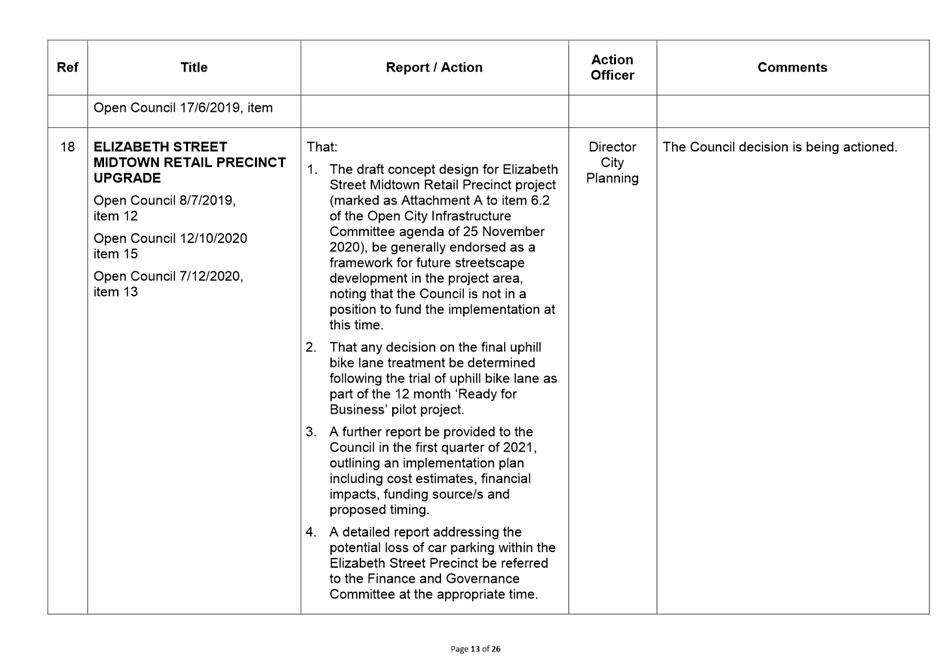


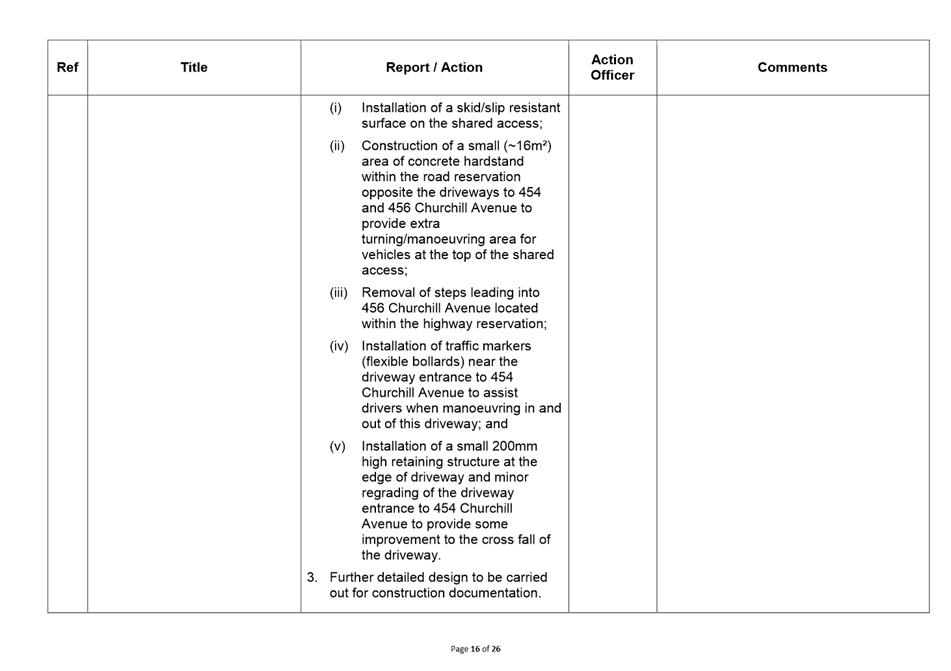
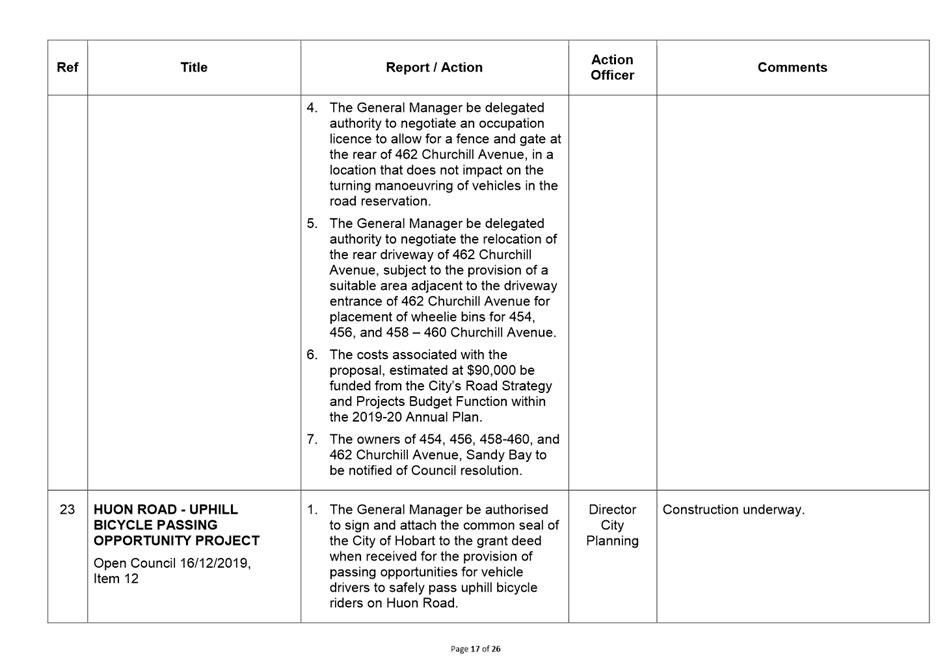
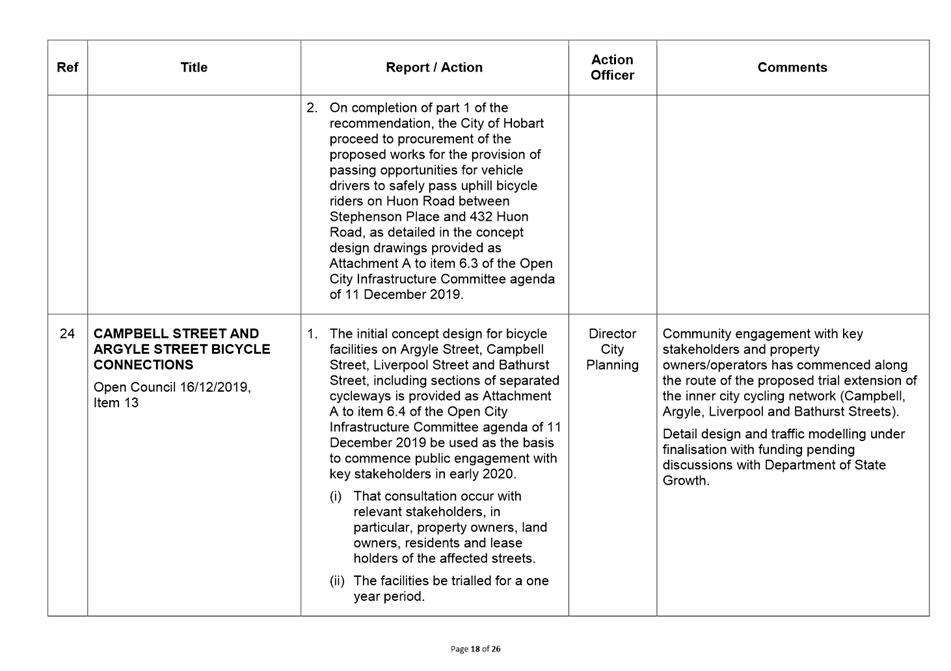
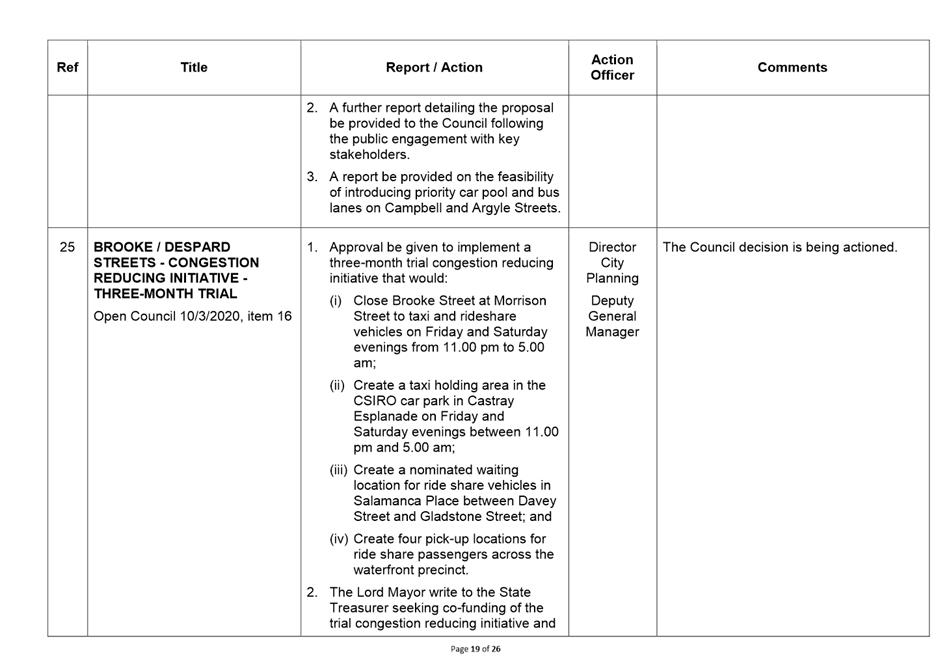

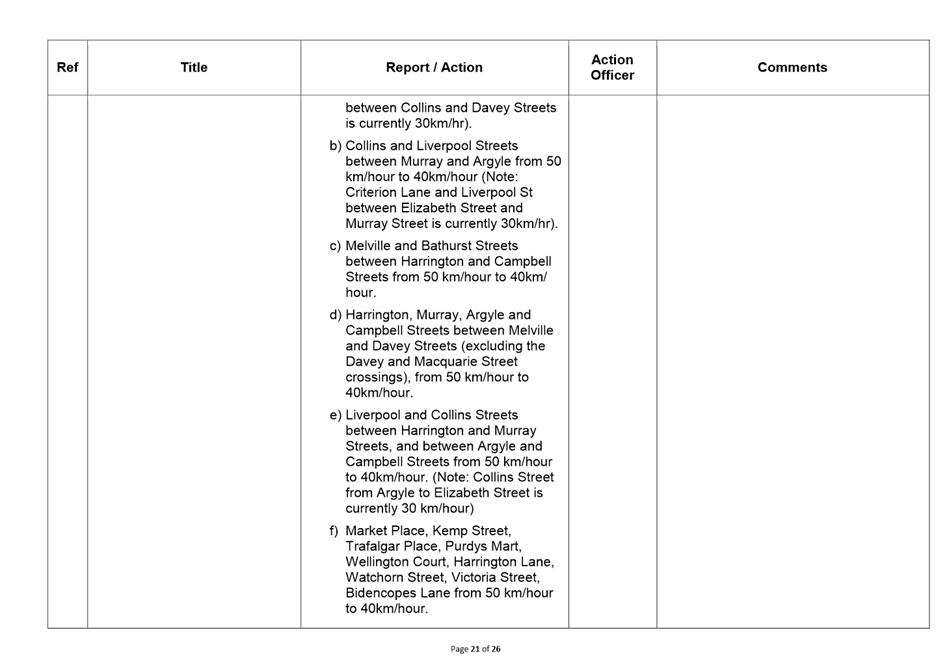
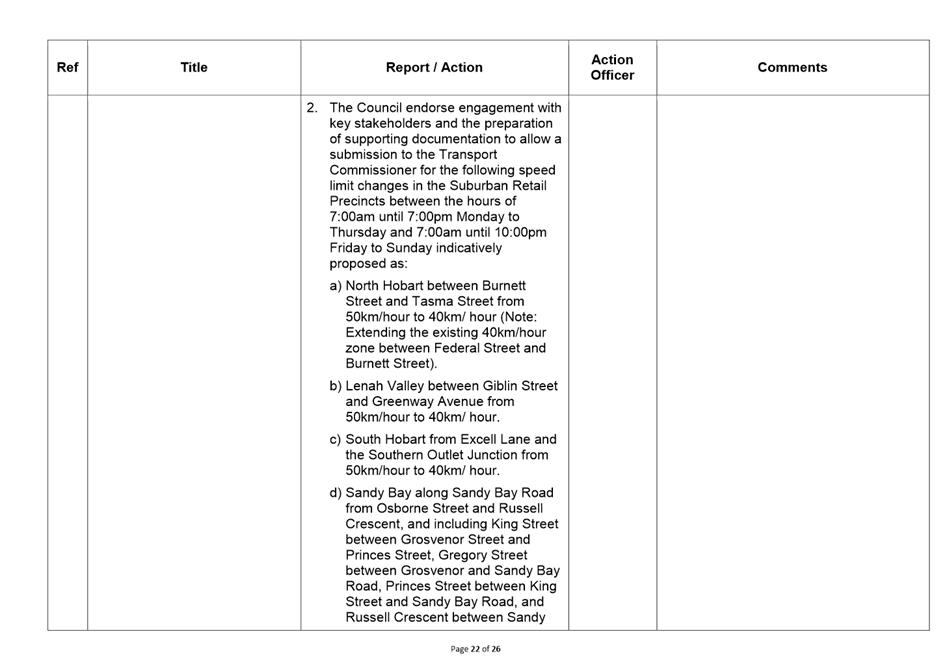
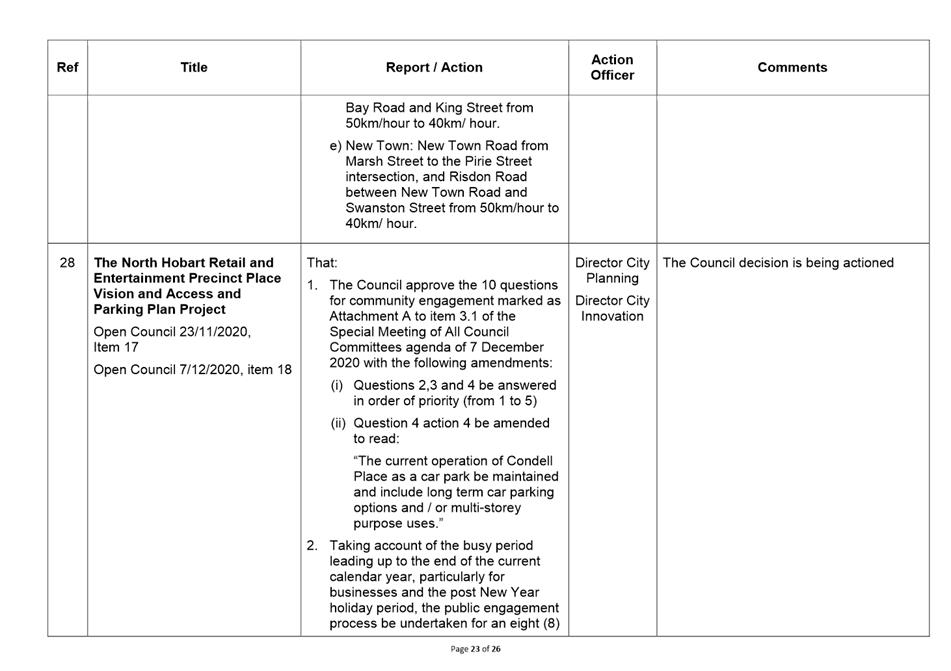
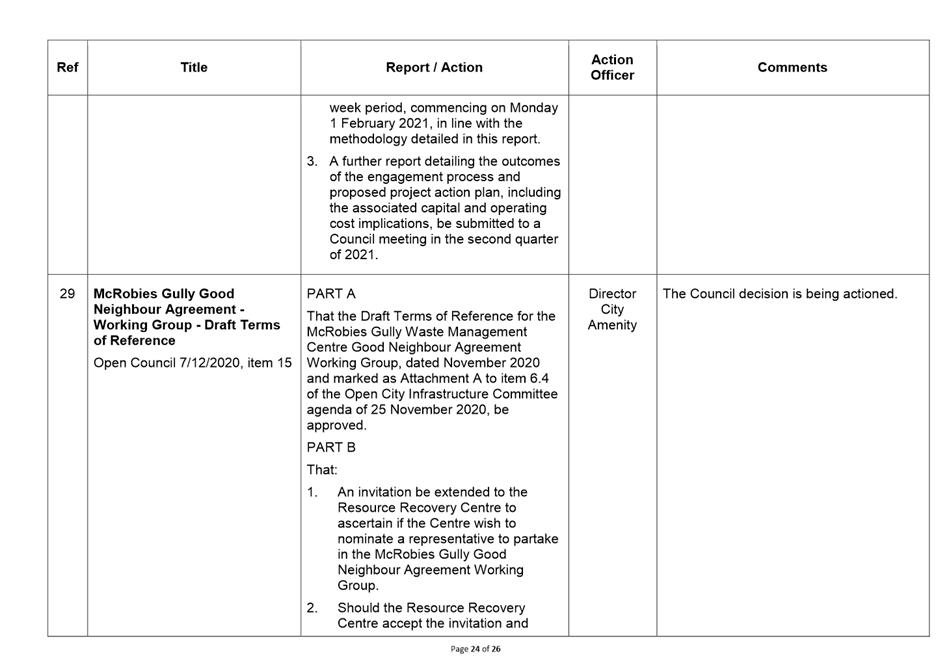
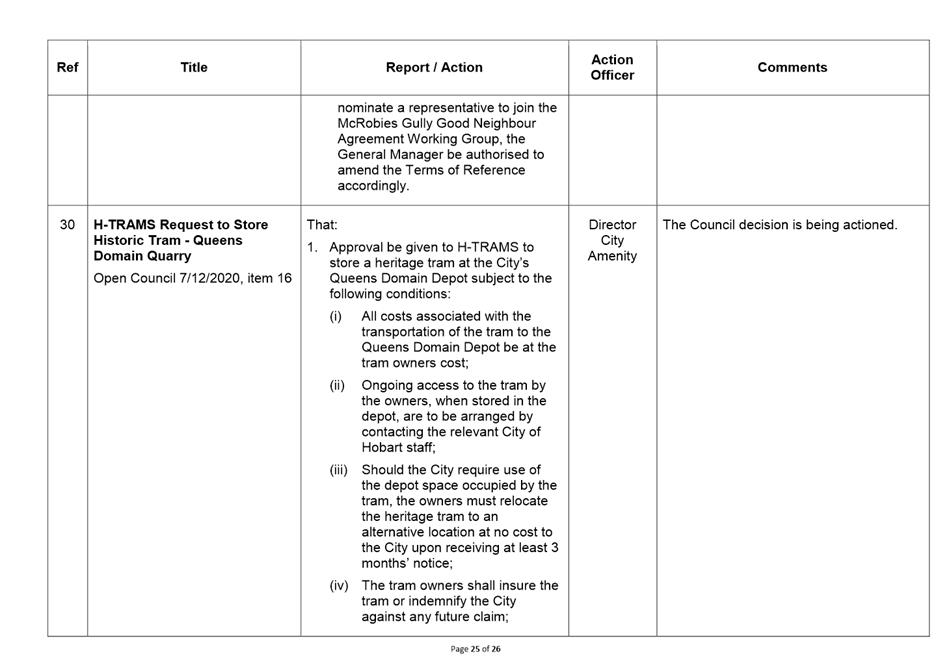
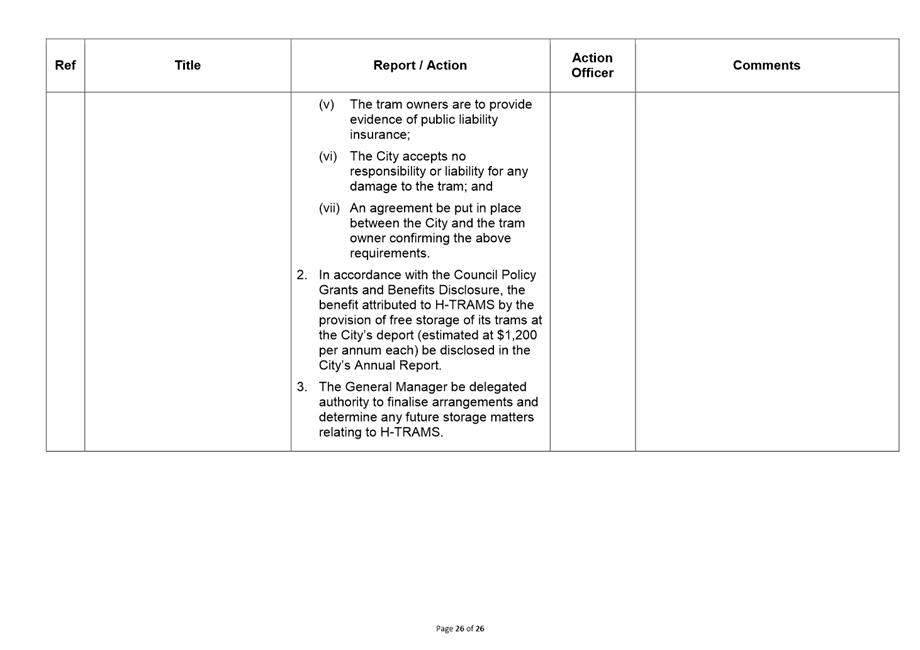
|
Agenda (Open Portion) City Infrastructure Committee Meeting |
Page 145 |
|
|
|
24/2/2021 |
|
Regulation 29(3) Local Government (Meeting
Procedures) Regulations 2015.
File Ref: 13-1-10
The General Manager reports:-
“In accordance with the procedures approved in respect to Questions Without Notice, the following responses to questions taken on notice are provided to the Committee for information.
The Committee is reminded that in accordance with Regulation 29(3) of the Local Government (Meeting Procedures) Regulations 2015, the Chairman is not to allow discussion or debate on either the question or the response.”
8.1 City of Hobart Fleet Vehicles
File Ref: F20/95884; 13-1-10
Memorandum of the Manager Projects & Support Services and the Director City Amenity of 19 February 2021.
8.2 Tip Shop Infrastructure
File Ref: F20/131691; 13-1-10
Memorandum of the Director City Amenity of 3 February 2021.
Delegation: Committee
|
That the information be received and noted.
|
|
Item No. 8.1 |
Agenda (Open Portion) City Infrastructure Committee Meeting |
Page 147 |
|
|
24/2/2021 |
|
Memorandum: Lord Mayor
Deputy Lord Mayor
Elected Members
Response to Question Without Notice
City of Hobart Fleet Vehicles
|
Meeting: City Infrastructure Committee
|
Meeting date: 26 August 2020
|
|
Raised by: Lord Mayor Reynolds |
|
Question:
(a) What is the utilisation of the City’s car fleet and what would be considered as under-utilisation?
(b) Is there consideration of shrinking the fleet in line with budget cuts?
Response:
The City of Hobart owns a wide range of fleet to support operations and comprises of light vehicles, trucks, major plant and minor plant.
The light vehicle fleet includes cars, utilities and small motorbikes/scooters.
These vehicles are used for a range of duties including:
· Inspection and transport of staff to worksites and projects;
· Inspection of the City’s assets (roads, stormwater, waste, building etc);
· Inspection of commercial food-related businesses by Health Officers;
· Inspection of sites associated with development applications and building works by developers;
· Meeting with the public and other authorities;
· Works at the City’s various parks, bushland, sporting facilities, ovals and other sites;
· Investigation of traffic issues and parking compliance matters; and
· Many other operational issues that require use of a vehicle.
Utilisation of these light vehicles is reviewed on a regular basis with the aim to have vehicles achieve annual mileage of 20,000km year. The vehicles are then due for renewal after a 5-year period (or having 100,000km). Vehicles identified as not having travelled the estimated annual distance are swapped within the fleet with vehicles which have exceeded the travelling distance. This process helps to ensure appropriate utilisation of the light vehicle fleet.
Mileage significantly less than 10,000km per year would be considered under-utilisation with the retention of any such vehicle actively explored.
The organisational restructure of 2019 resulted in a number of fleet management efficiencies to occur, as well has the recent departure of several management positions resulting in a further 15% decrease in the number of light fleet vehicles.
This reduction in numbers will subsequently increase utilisation of the remaining vehicles.
Light vehicle usage and numbers continue to be reviewed, particularly following the resignation of staff and organisation restructures.
As signatory to this report, I certify that, pursuant to Section 55(1) of the Local Government Act 1993, I hold no interest, as referred to in Section 49 of the Local Government Act 1993, in matters contained in this report.
|
Geoff Lang Manager Projects & Support Services |
Glenn Doyle Director City Amenity |
Date: 19 February 2021
File Reference: F20/95884; 13-1-10
|
Item No. 8.2 |
Agenda (Open Portion) City Infrastructure Committee Meeting |
Page 149 |
|
|
24/2/2021 |
|
Memorandum: Lord Mayor
Deputy Lord Mayor
Elected Members
Response to Question Without Notice
Tip Shop Infrastructure
|
Meeting: City Infrastructure Committee
|
Meeting date: 25 November 2020
|
|
Raised by: Councillor Ewin |
|
Question:
It is of my understanding that the building infrastructure housing the Tip Shop recently destroyed by fire is Council owned, therefore could the Director please provide an approximate timeline advising of when the damaged infrastructure will be removed and/or when the infrastructure will be replaced?
Response:
The site and buildings are owned by the City and leased to operators of the ‘Tip Shop’, the Resource Cooperative, accordingly, repairs and replacement of the facility will be covered by the City’s insurer.
As a result of the incident a claim has been lodged and following is provided in terms of progress made to address the damage.
Demolition
Demolition of the damaged sections of the buildings was undertaken in the first week of December 2020.
The drive-through area suffered damage to the steel posts, trusses and roofing and has been partially demolished.
Replacement
The scope of works has been completed and the insurer is awaiting quotations for replacement of the storage shed up to current Australian Standards along with repairs to the open delivery area structure.
In addition, the insurer is seeking quotations and timeframes to install a meter box at the rear of the property so power could be reinstated to the office area to enable the Resource Cooperative to re-occupy the offices.
Once quotations have been obtained the repairs and replacement can be authorised by the insurer.
Due to the recent Christmas/New Year period, the work is not likely to commence for sometime and may take 9 months to complete.
A hygienist has assessed the main Resource Recovery building and deemed it safe to occupy.
It is expected that the Resource Cooperative will be able to operate for the majority of the time the repairs and replacement occur.
As signatory to this report, I certify that, pursuant to Section 55(1) of the Local Government Act 1993, I hold no interest, as referred to in Section 49 of the Local Government Act 1993, in matters contained in this report.
|
Glenn Doyle Director City Amenity |
|
Date: 3 February 2021
File Reference: F20/131691; 13-1-10
|
|
Agenda (Open Portion) City Infrastructure Committee Meeting |
Page 150 |
|
|
24/2/2021 |
|
Section 29 of the Local Government (Meeting Procedures) Regulations 2015.
File Ref: 13-1-10
An Elected Member may ask a question without notice of the Chairman, another Elected Member, the General Manager or the General Manager’s representative, in line with the following procedures:
1. The Chairman will refuse to accept a question without notice if it does not relate to the Terms of Reference of the Council committee at which it is asked.
2. In putting a question without notice, an Elected Member must not:
(i) offer an argument or opinion; or
(ii) draw any inferences or make any imputations – except so far as may be necessary to explain the question.
3. The Chairman must not permit any debate of a question without notice or its answer.
4. The Chairman, Elected Members, General Manager or General Manager’s representative who is asked a question may decline to answer the question, if in the opinion of the respondent it is considered inappropriate due to its being unclear, insulting or improper.
5. The Chairman may require a question to be put in writing.
6. Where a question without notice is asked and answered at a meeting, both the question and the response will be recorded in the minutes of that meeting.
7. Where a response is not able to be provided at the meeting, the question will be taken on notice and
(i) the minutes of the meeting at which the question is asked will record the question and the fact that it has been taken on notice.
(ii) a written response will be provided to all Elected Members, at the appropriate time.
(iii) upon the answer to the question being circulated to Elected Members, both the question and the answer will be listed on the agenda for the next available ordinary meeting of the committee at which it was asked, where it will be listed for noting purposes only.
|
|
Agenda (Open Portion) City Infrastructure Committee Meeting |
Page 151 |
|
|
24/2/2021 |
|
|
That the Committee resolve by majority that the meeting be closed to the public pursuant to regulation 15(1) of the Local Government (Meeting Procedures) Regulations 2015 because the items included on the closed agenda contain the following matters:
· Commercial information of a commercial nature; and · Acquisition of land.
The following items are listed for discussion:-
Item No. 1 Minutes of the last meeting of the Closed Portion of the Committee Meeting Item No. 2 Consideration of supplementary items to the agenda Item No. 3 Indications of pecuniary and conflicts of interest Item No. 4 Committee Action Status Report Item No. 4.1 Committee Actions - Status Report LG(MP)R 15(2)(c)(iii) and (f) Item No. 5 Questions Without Notice
|